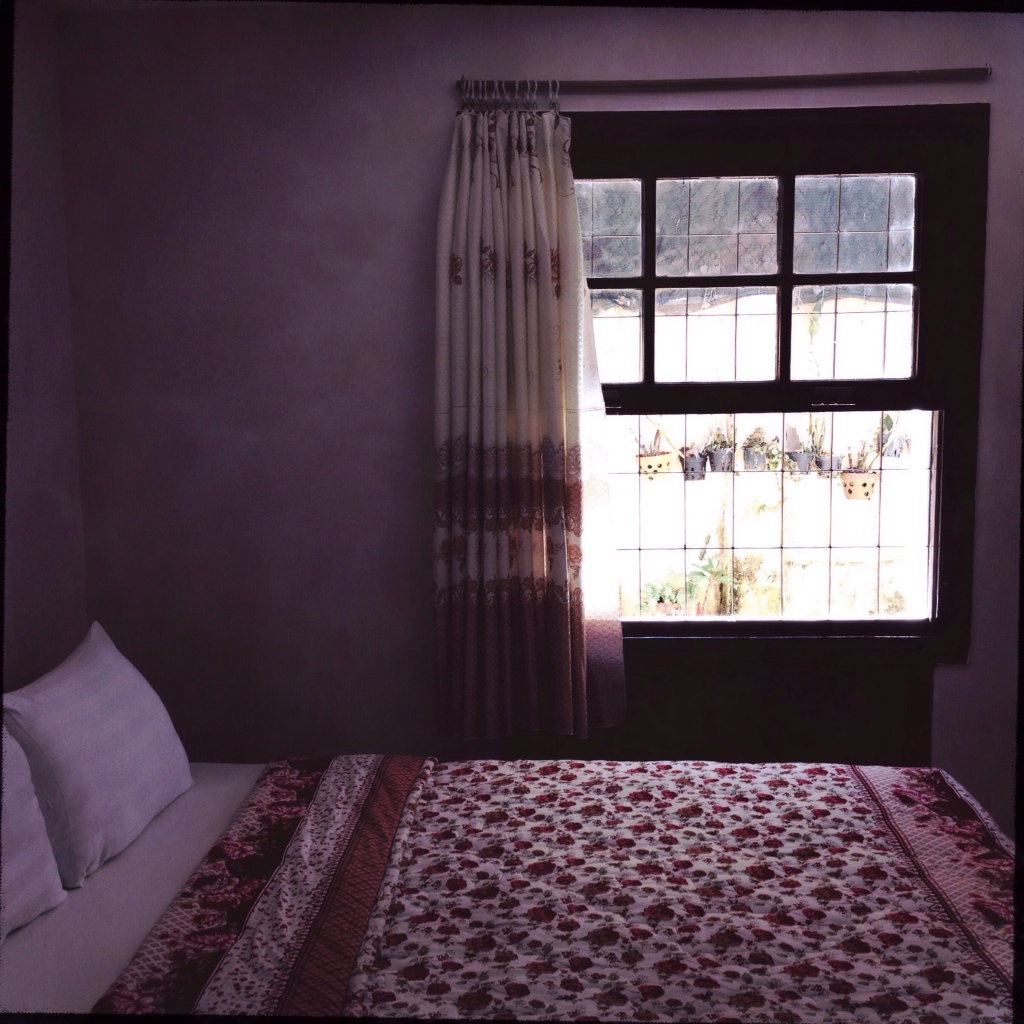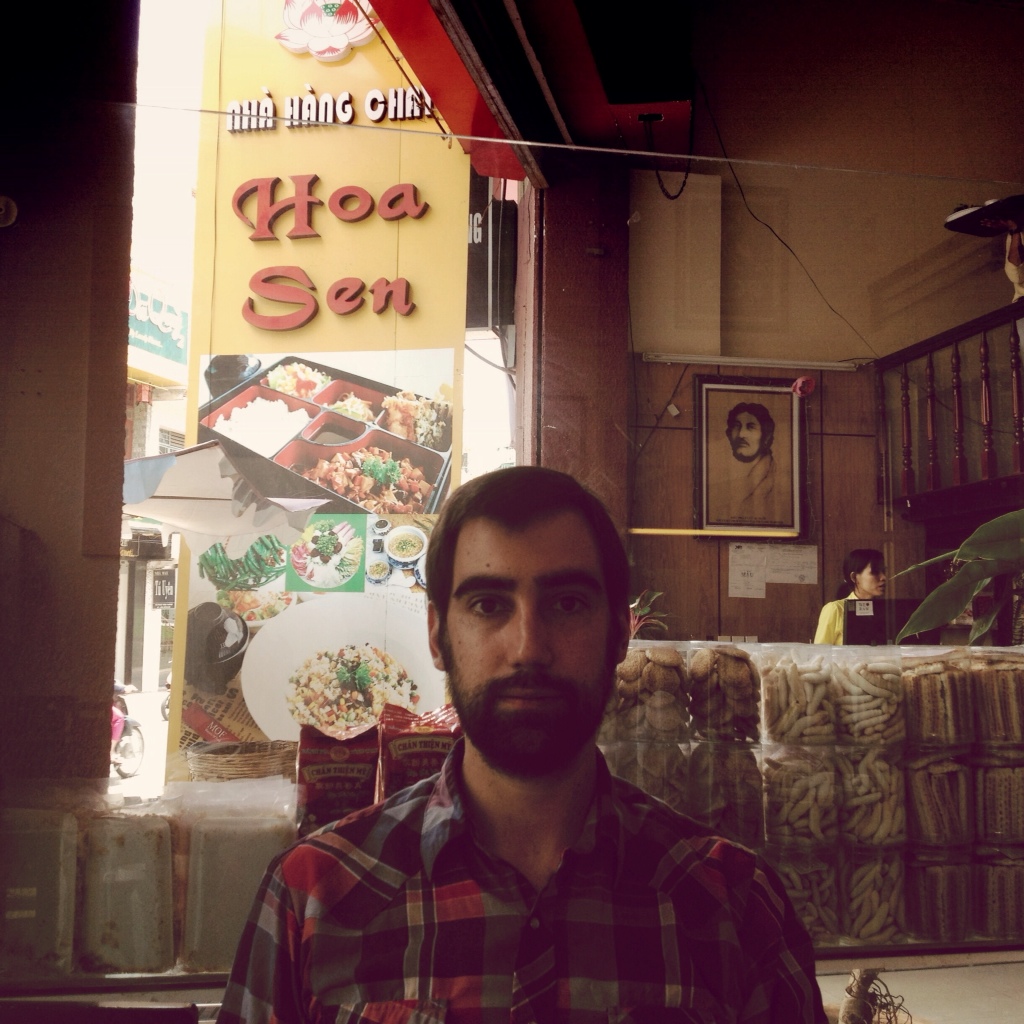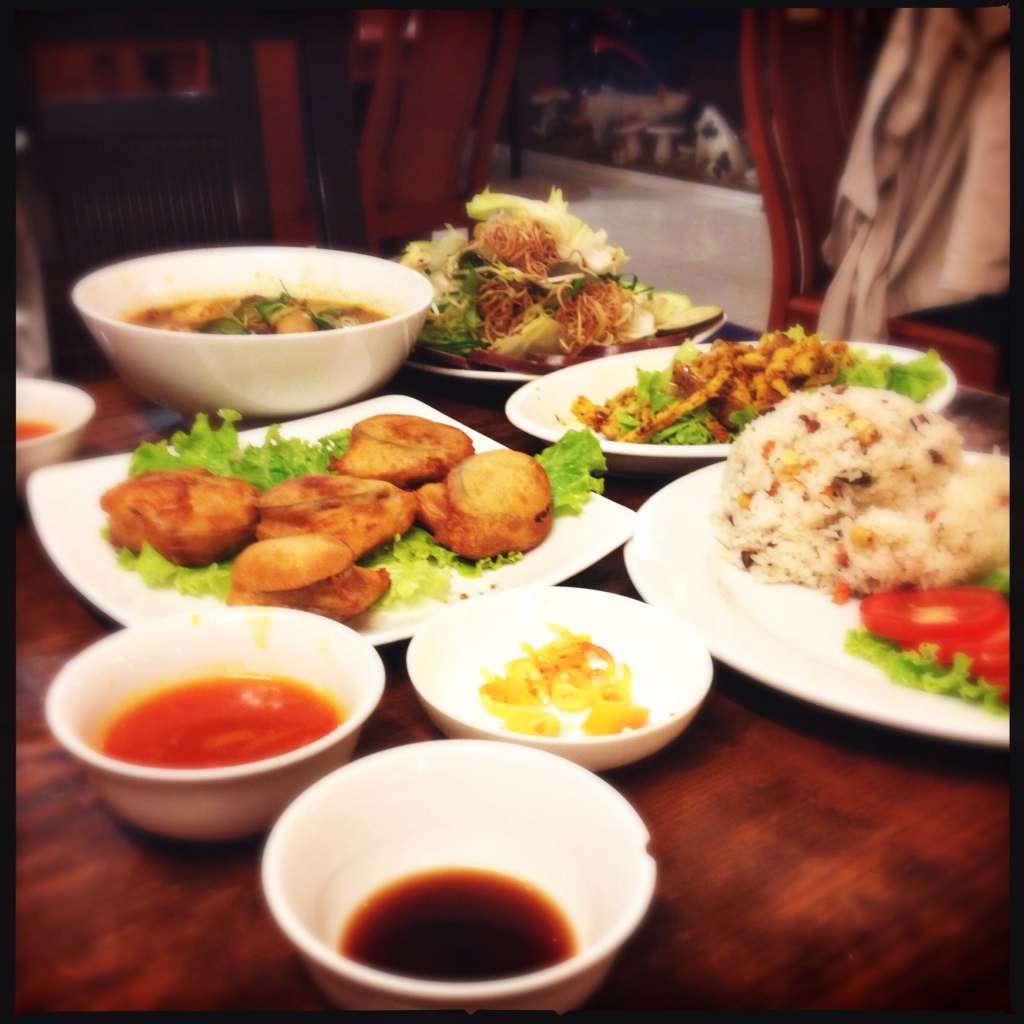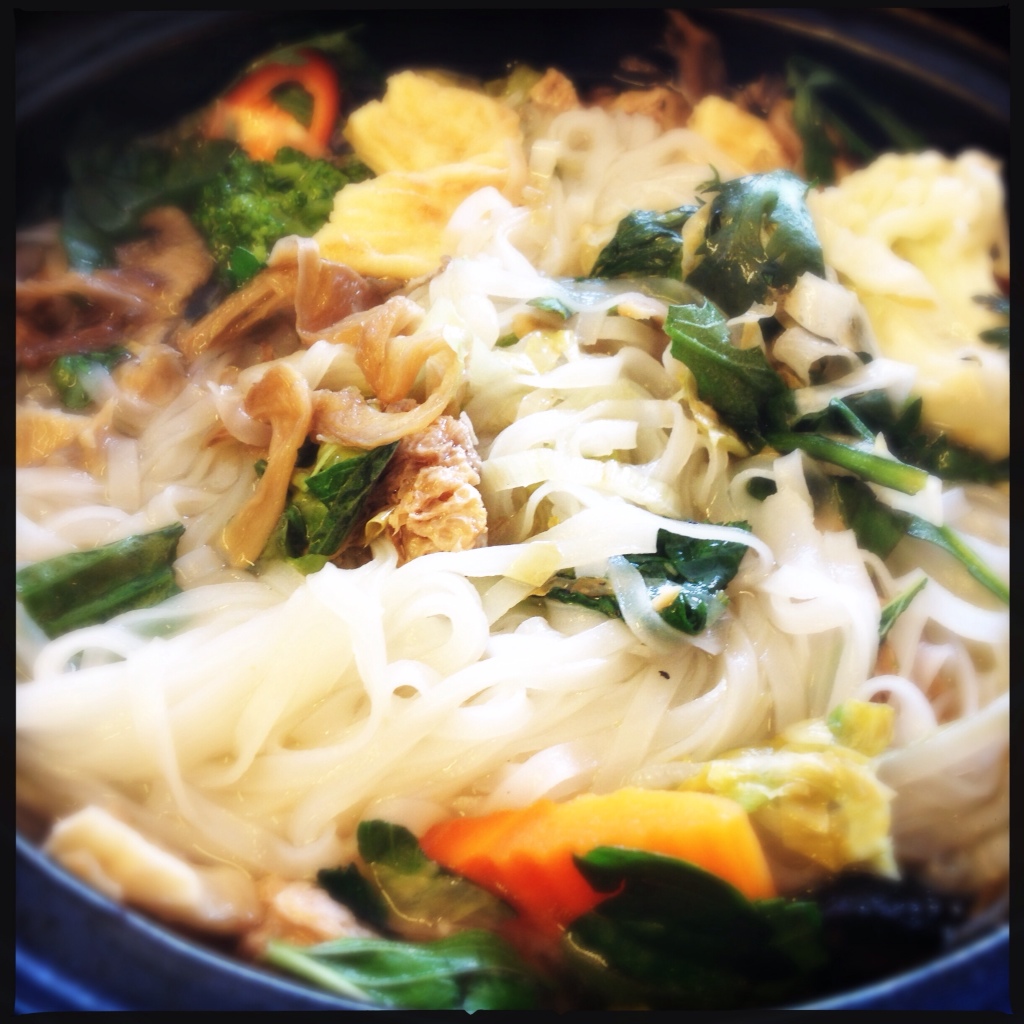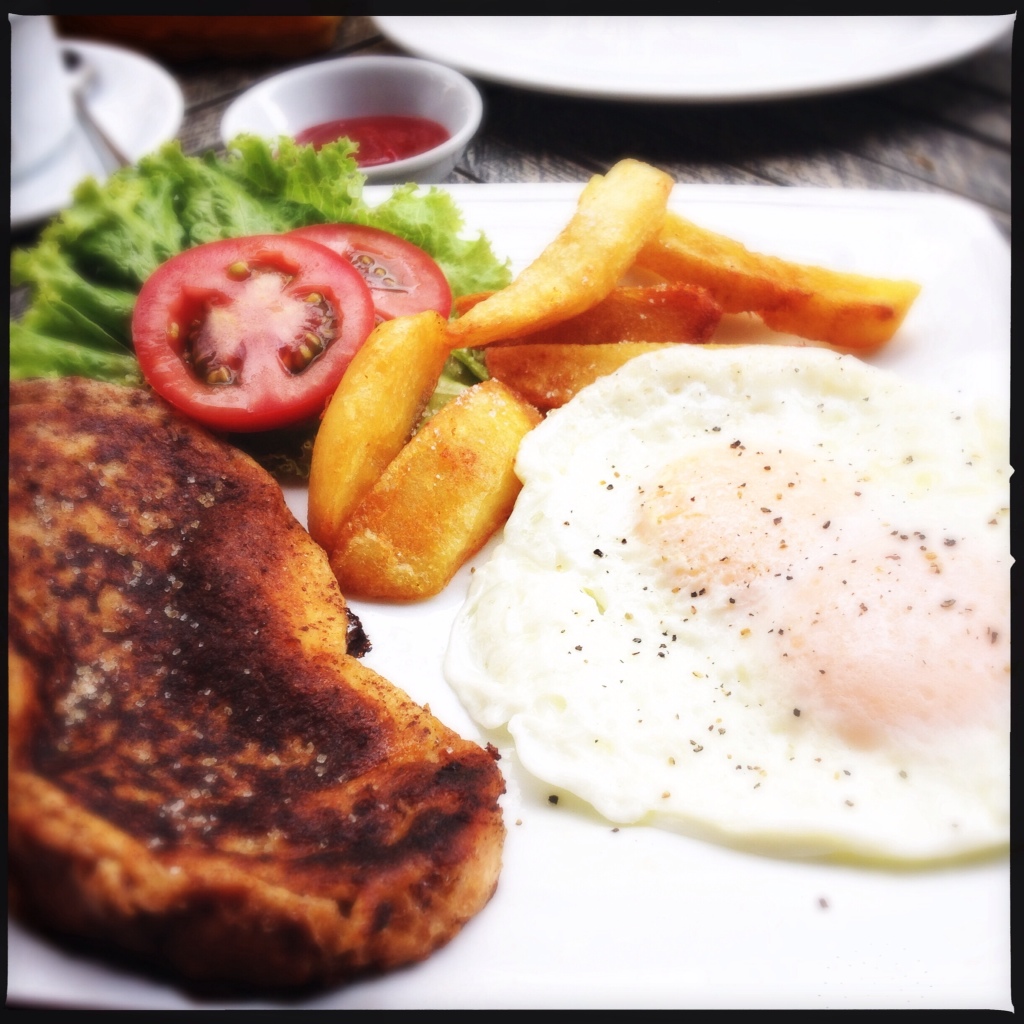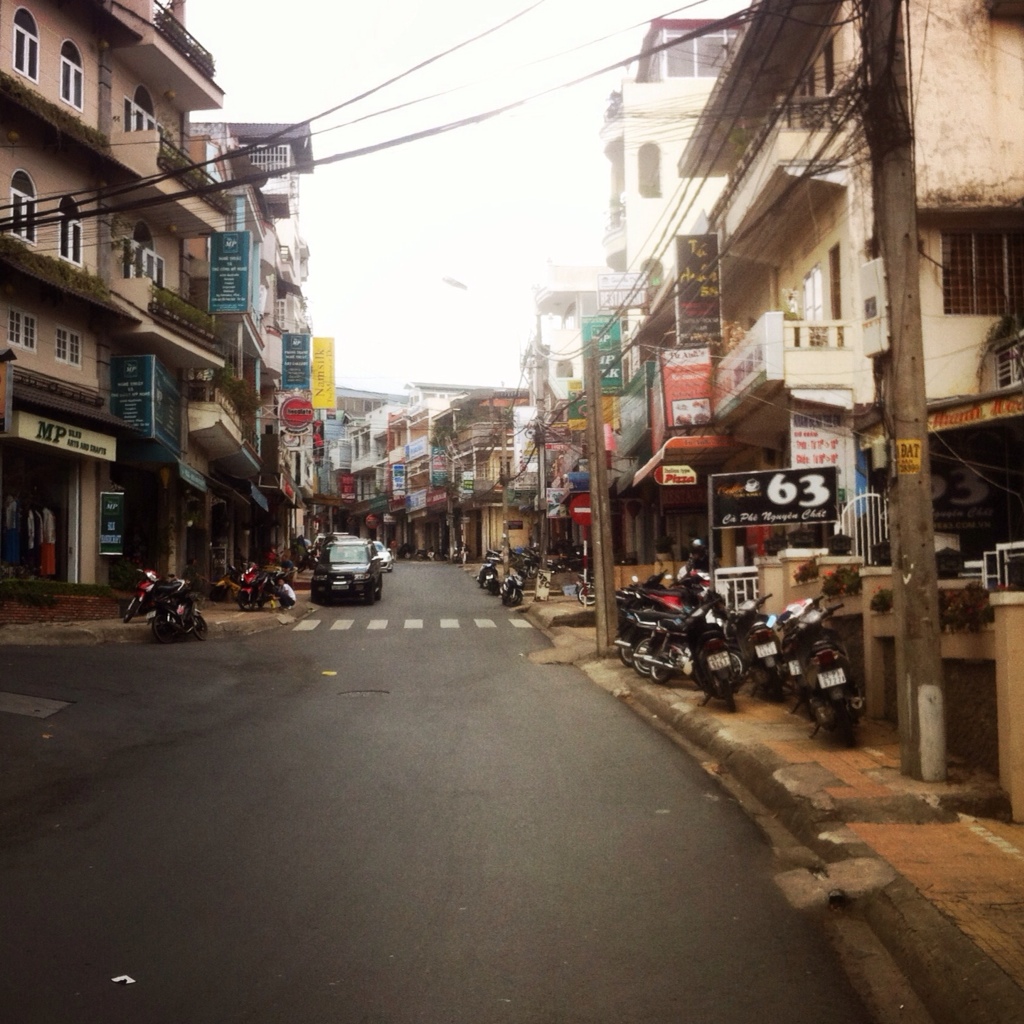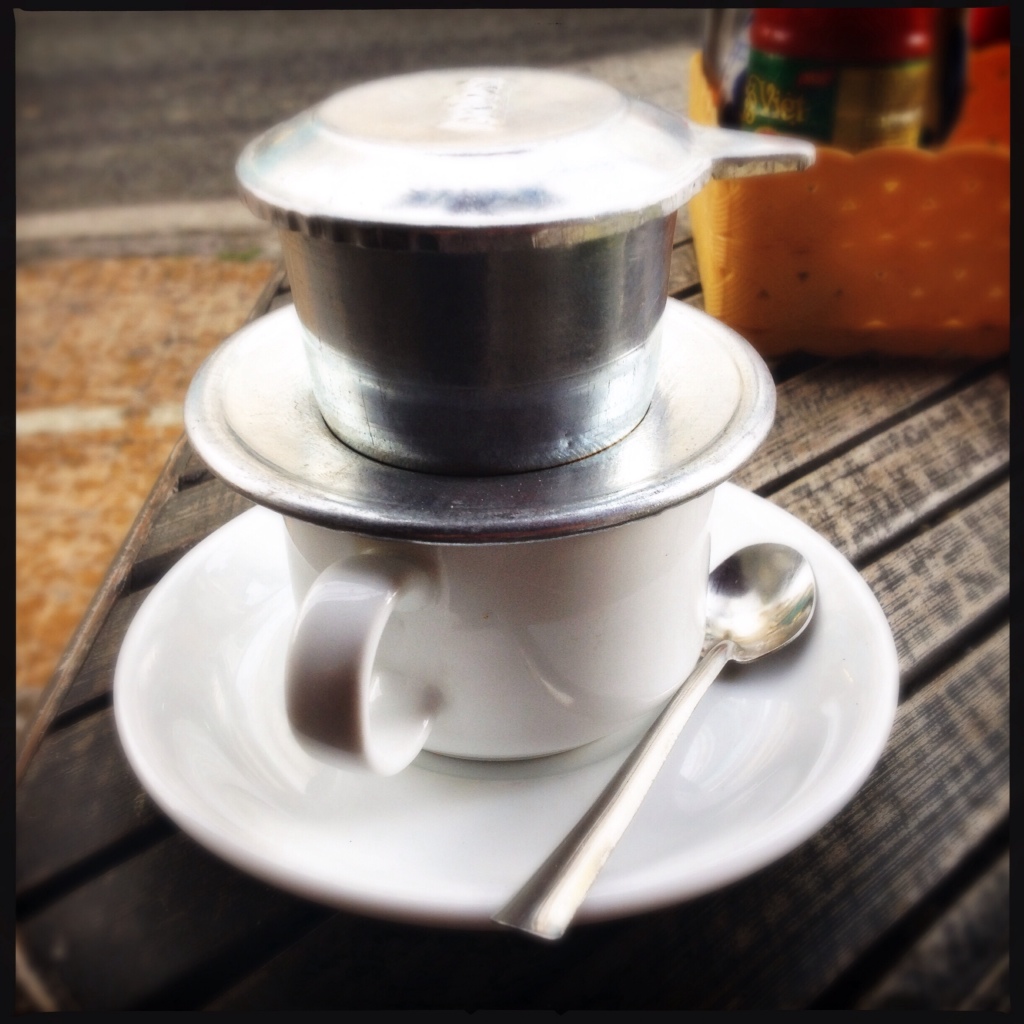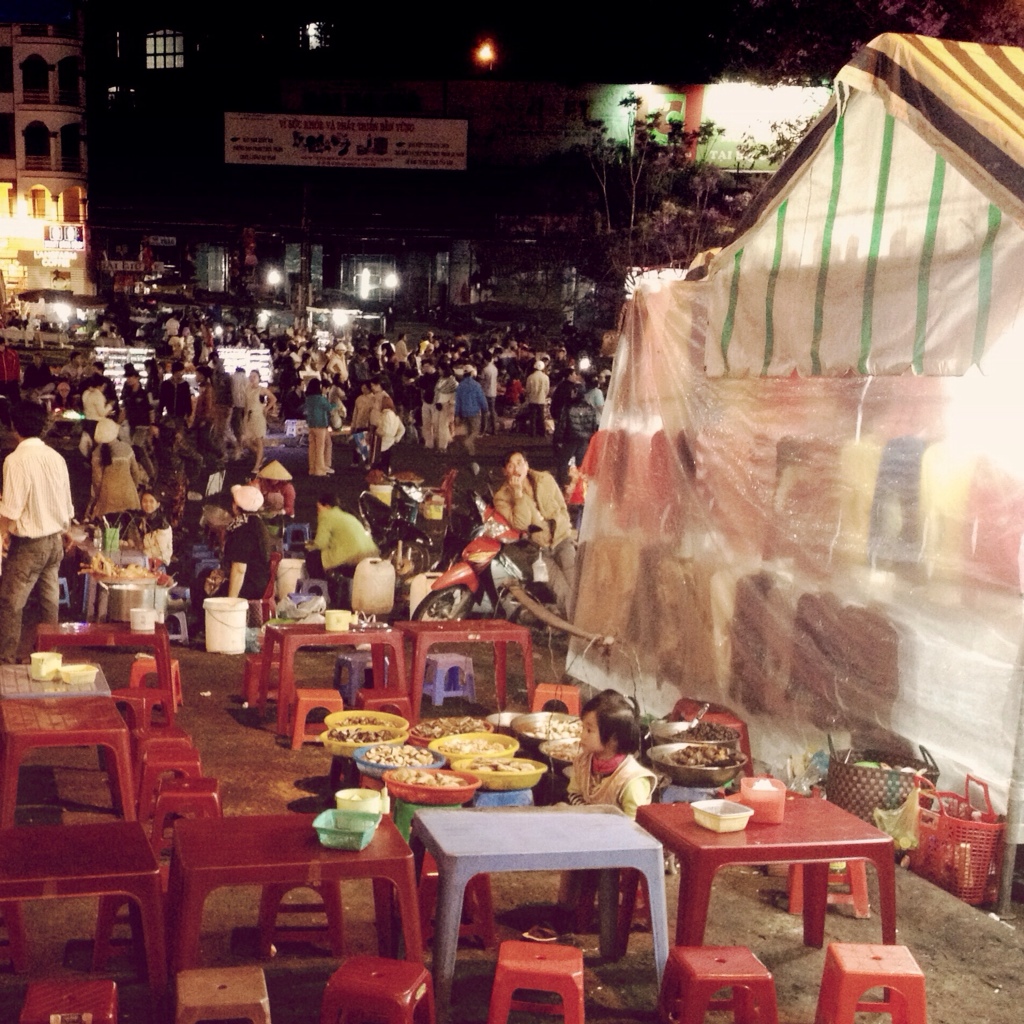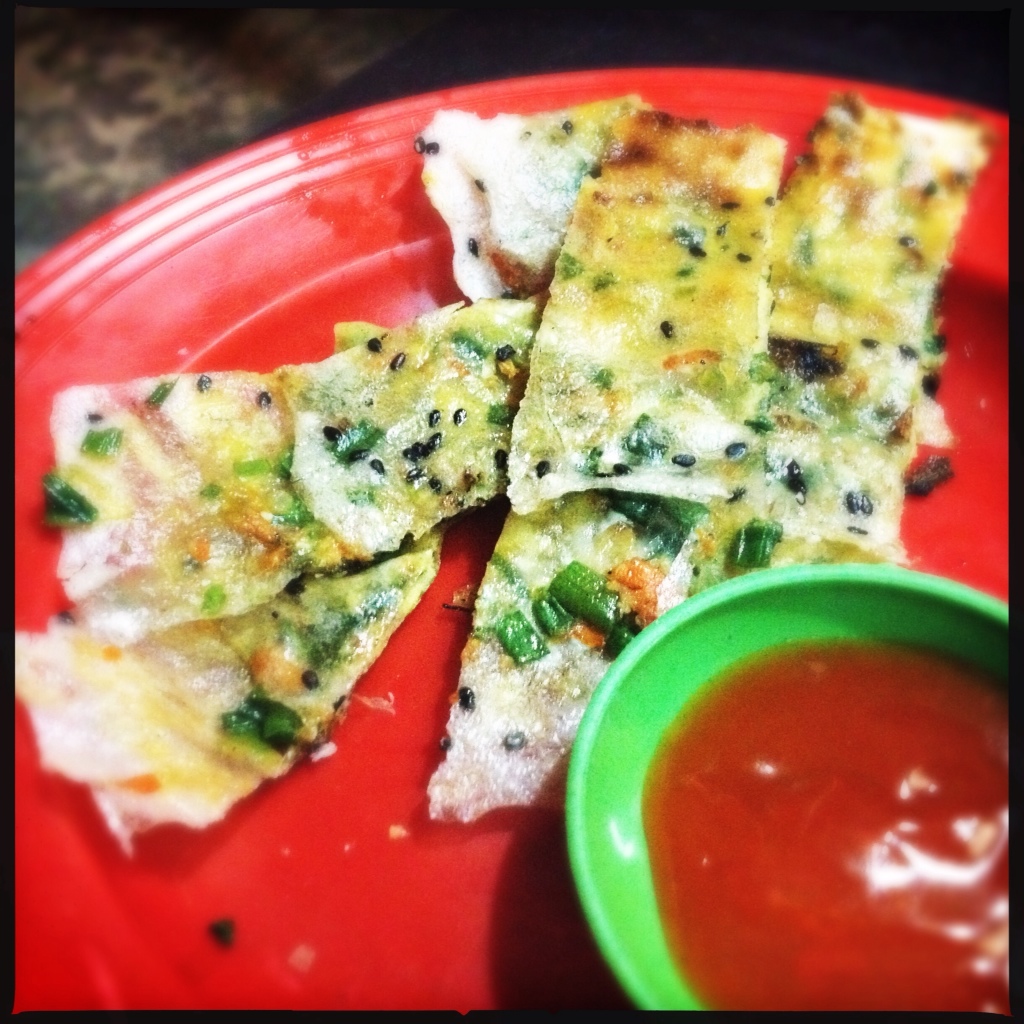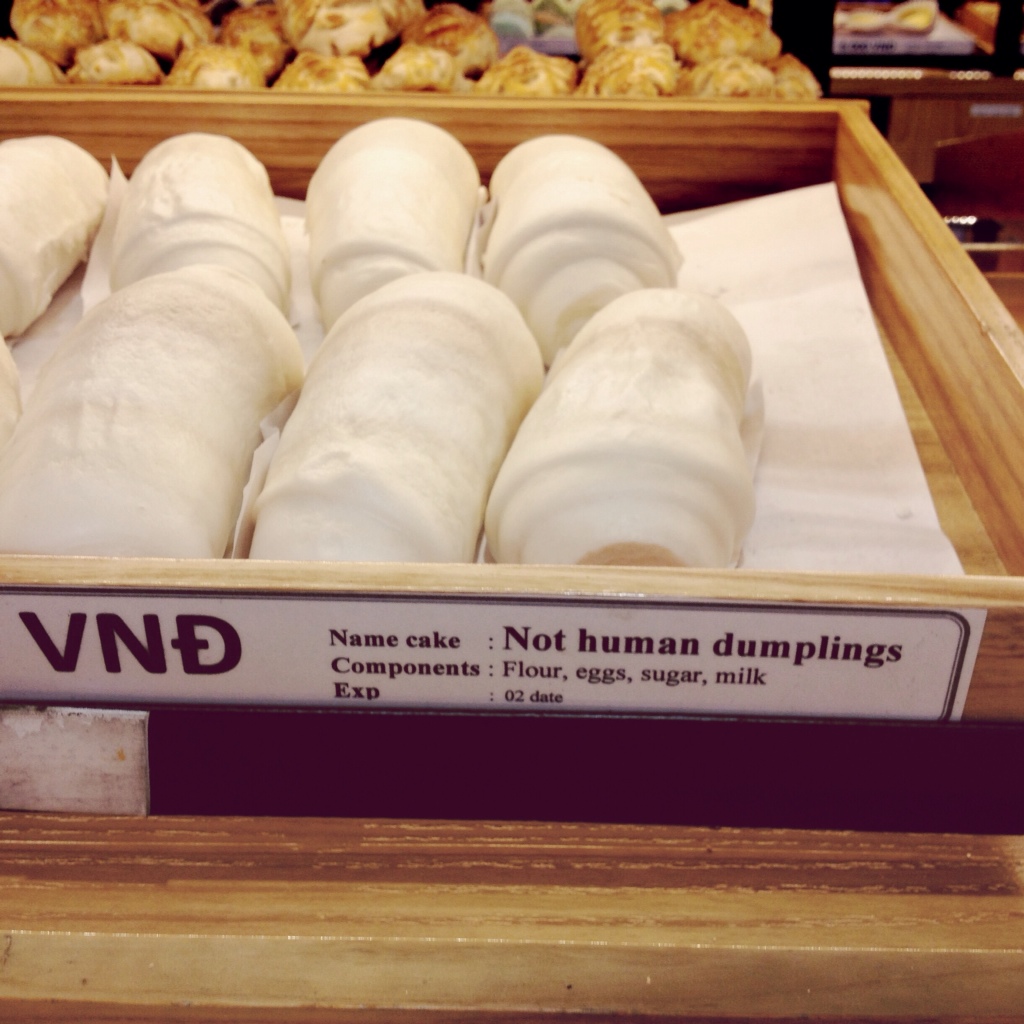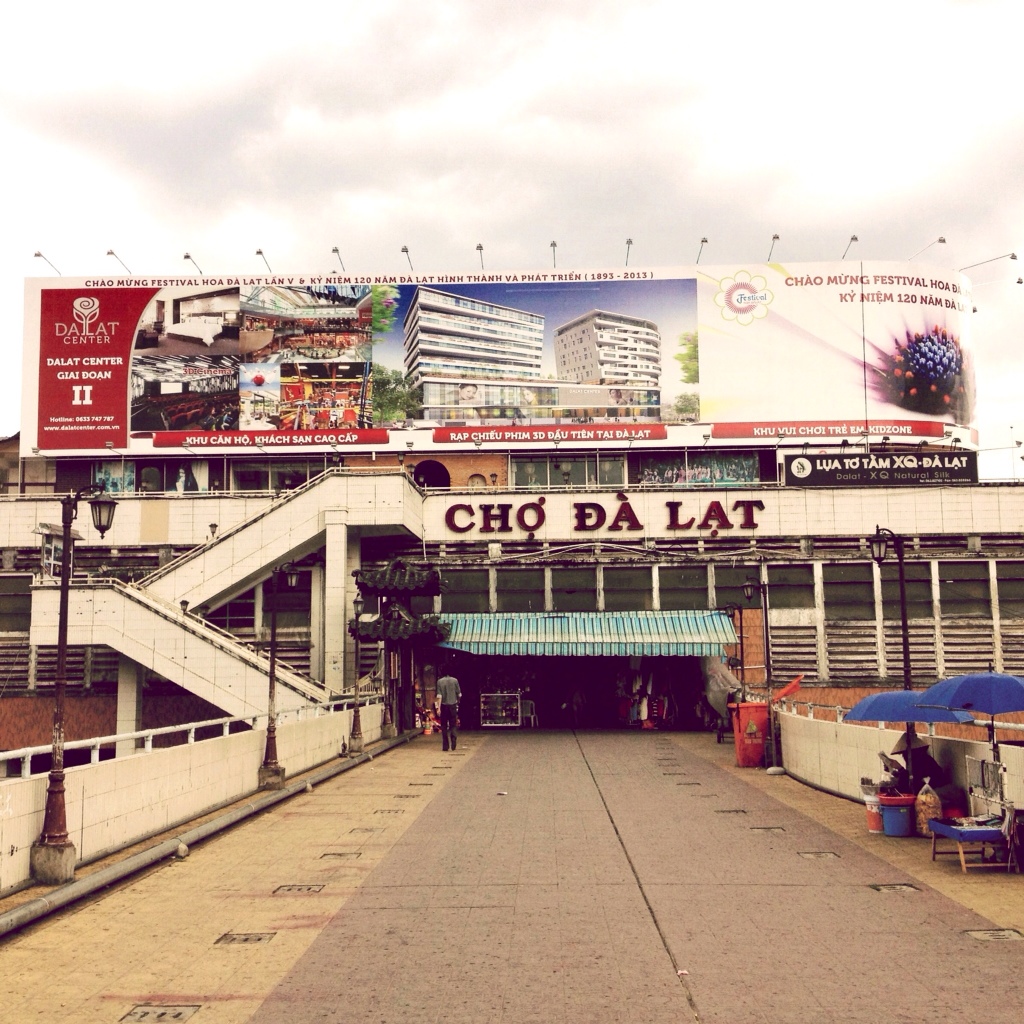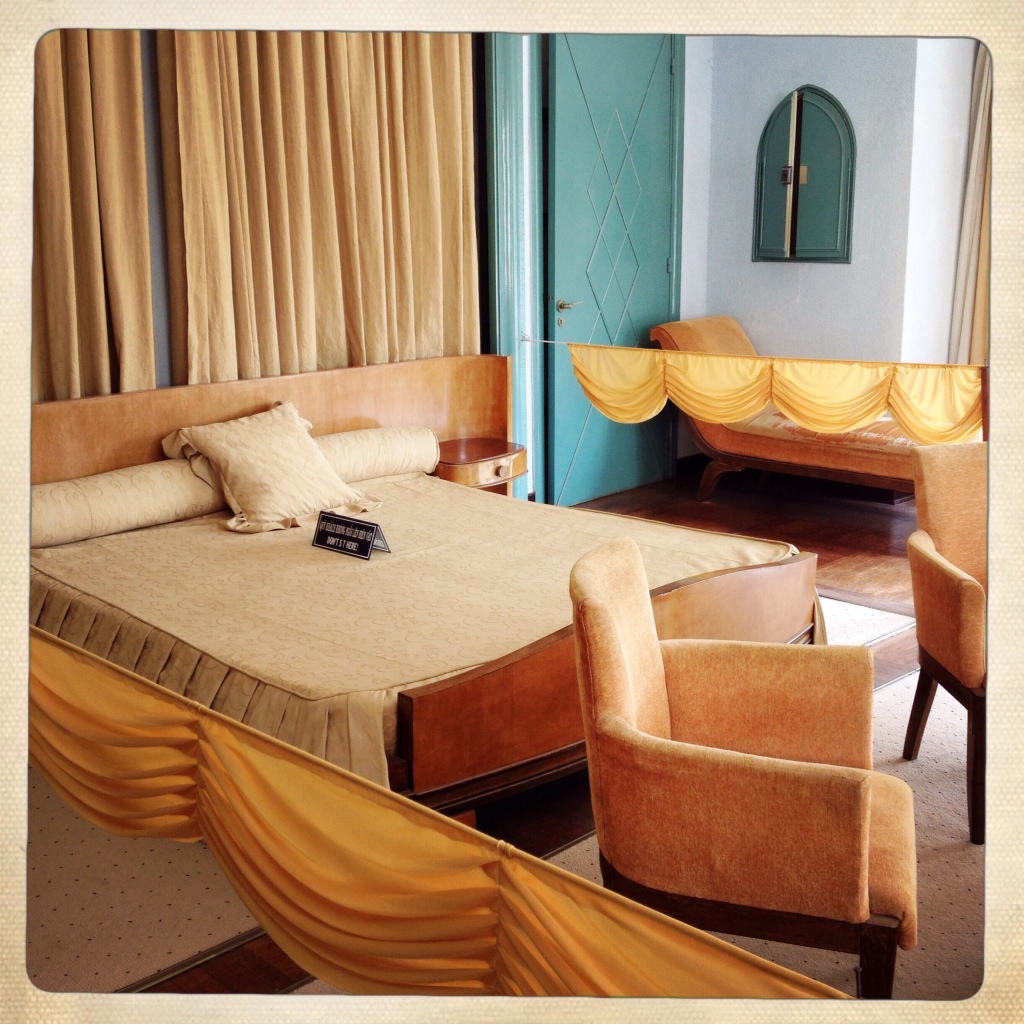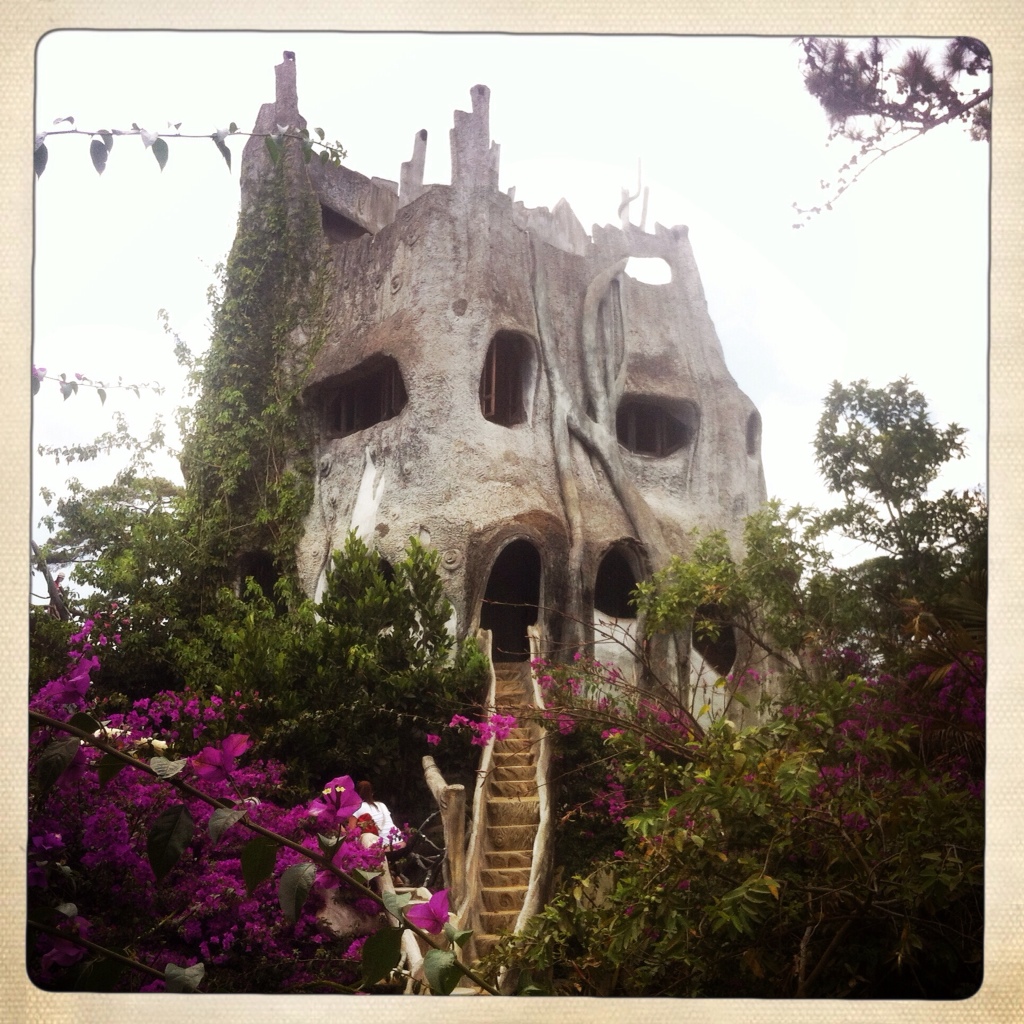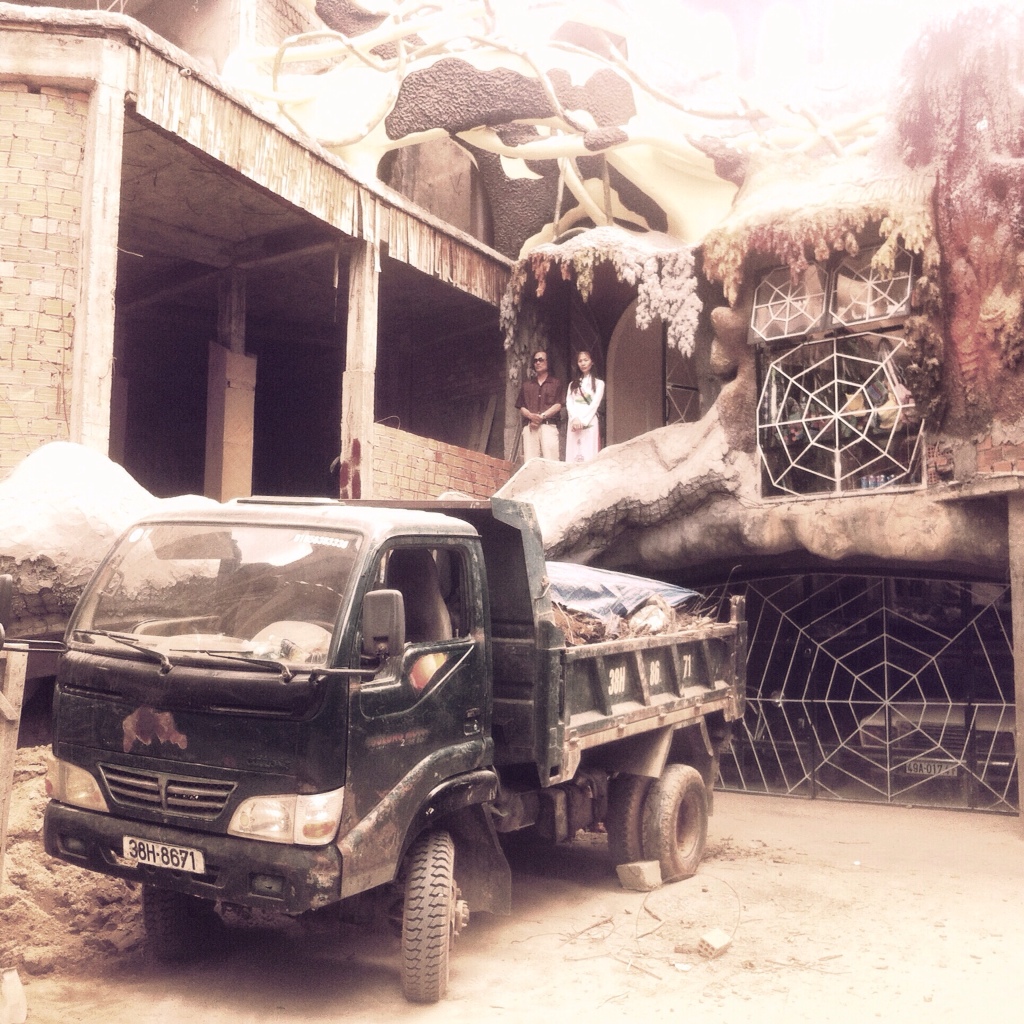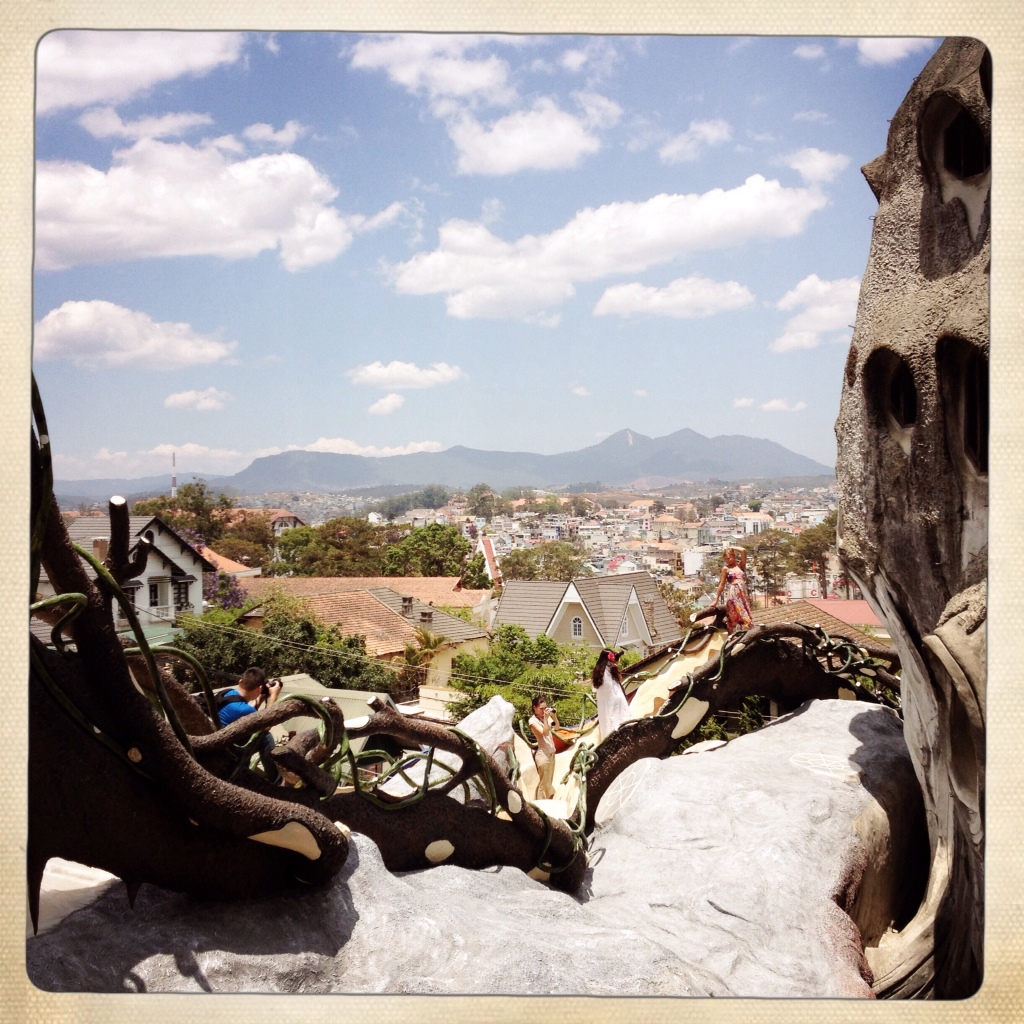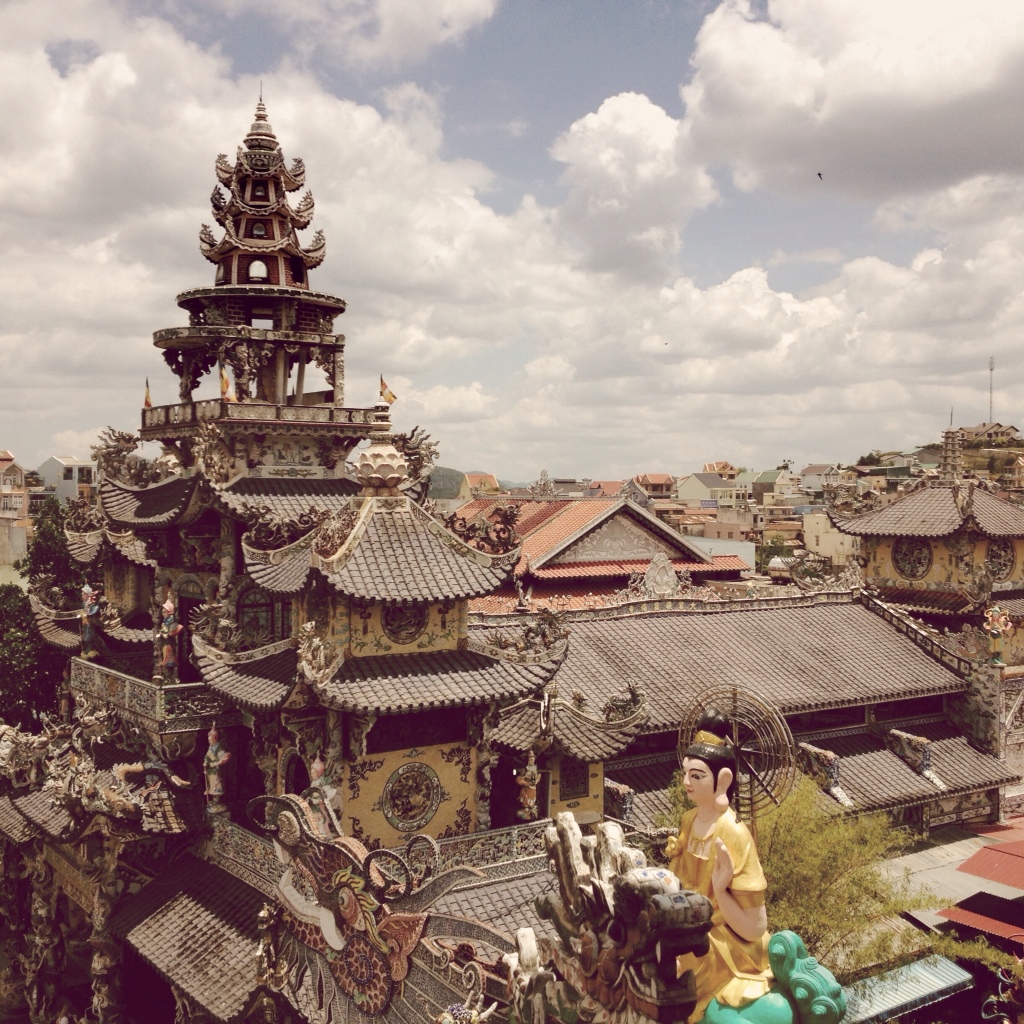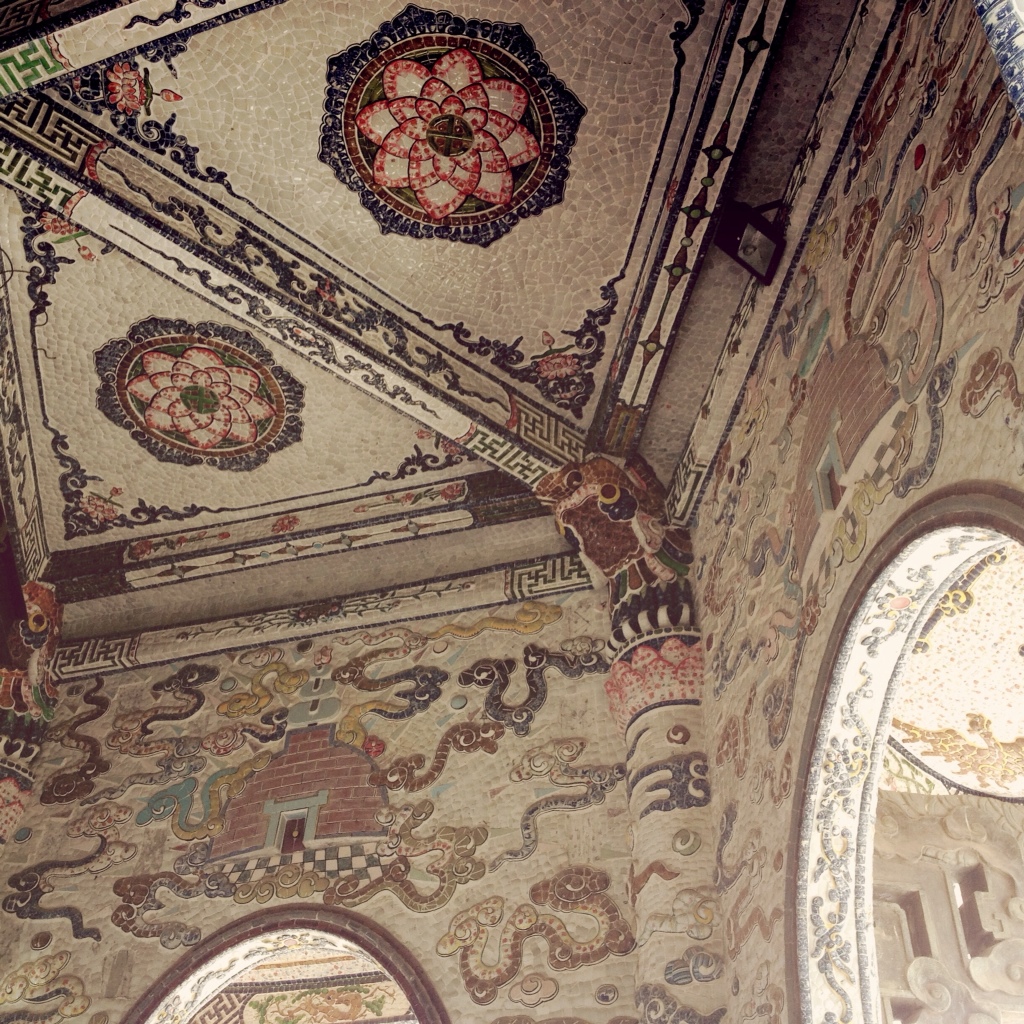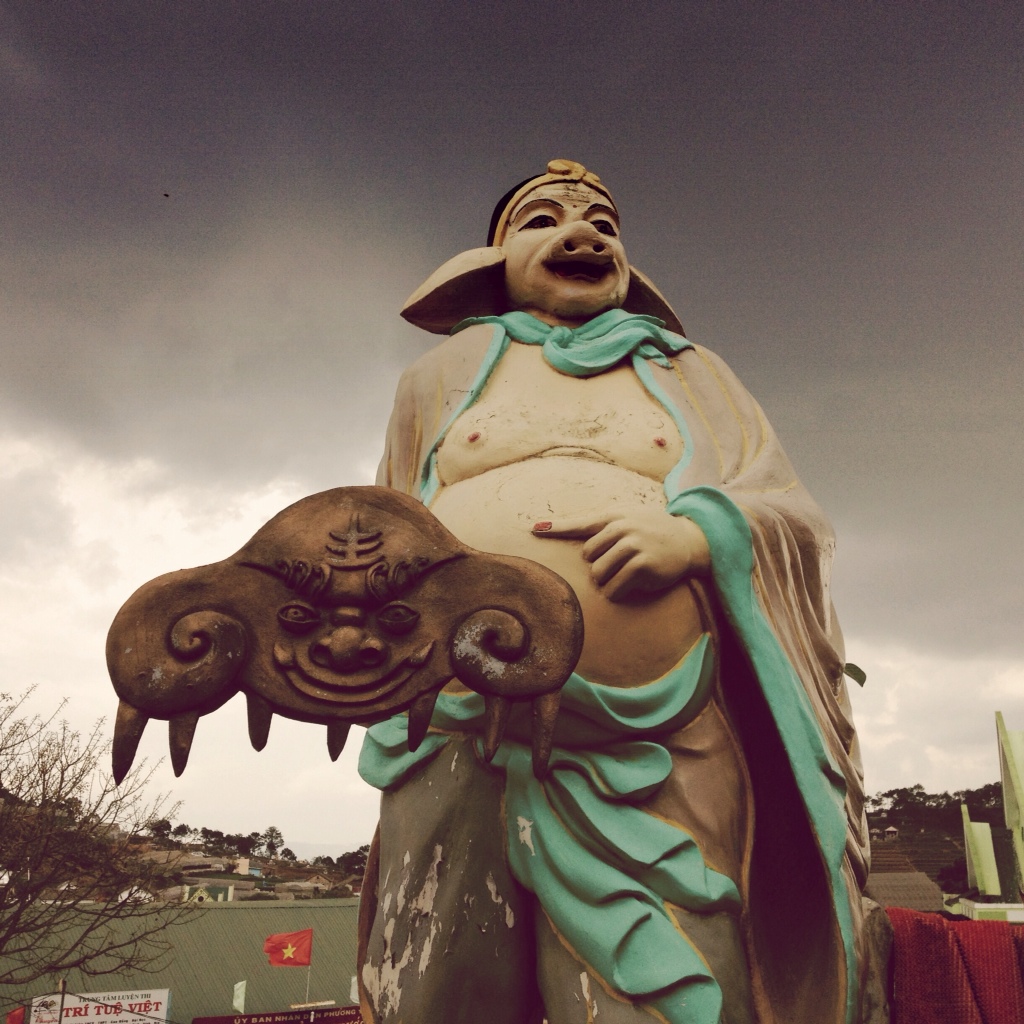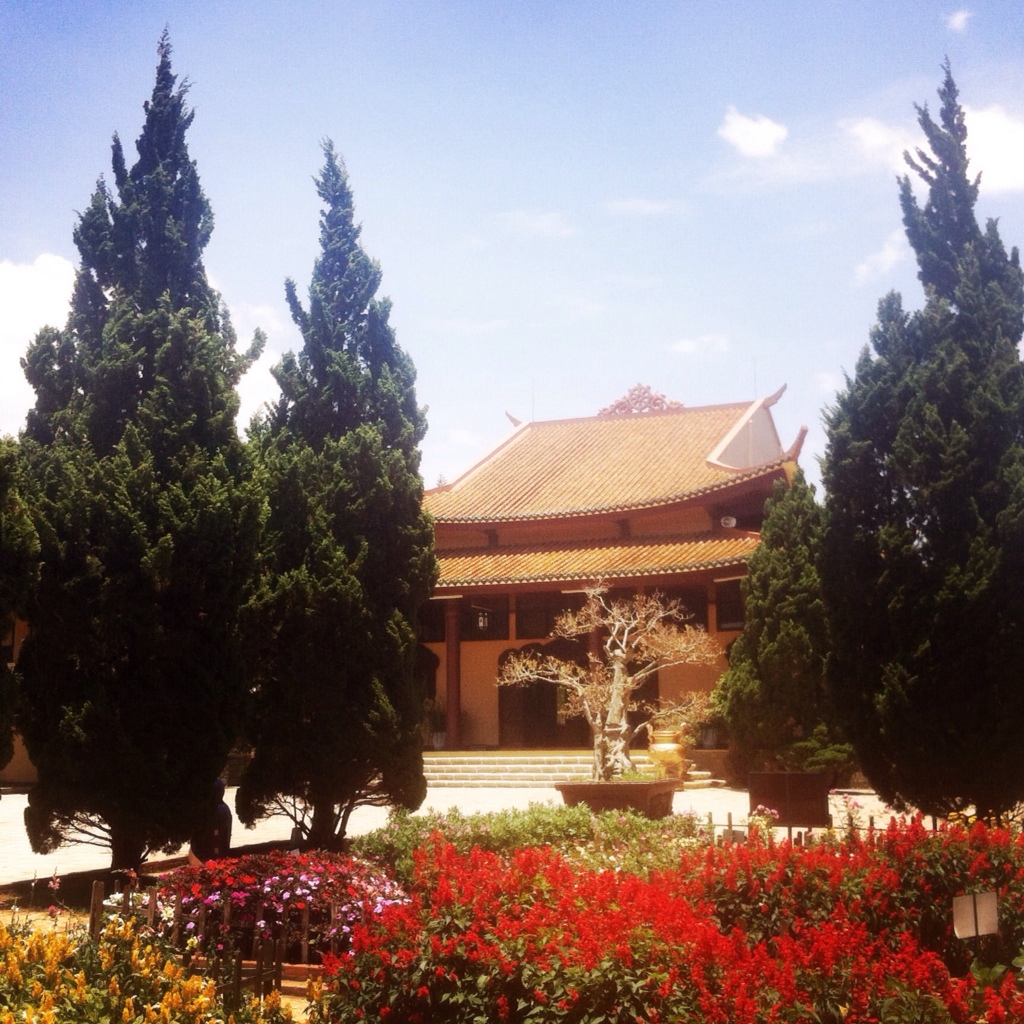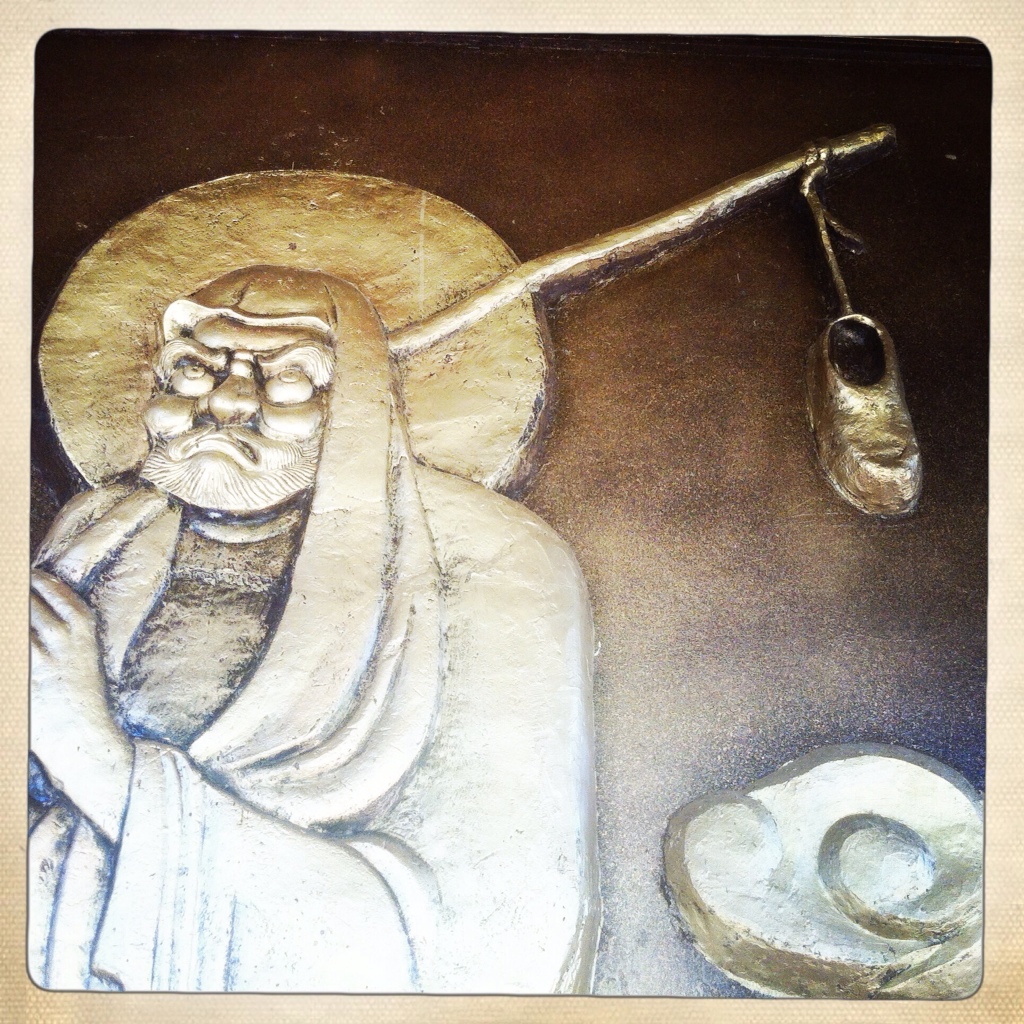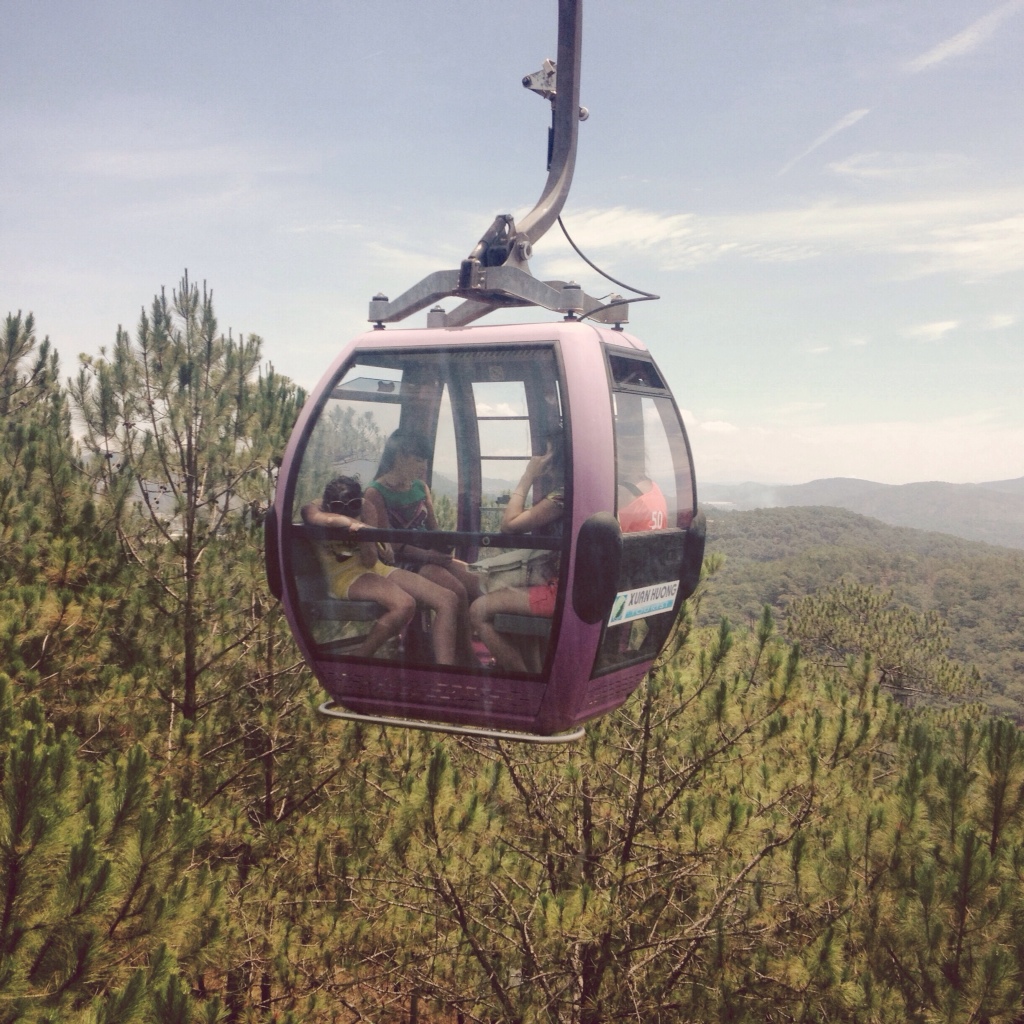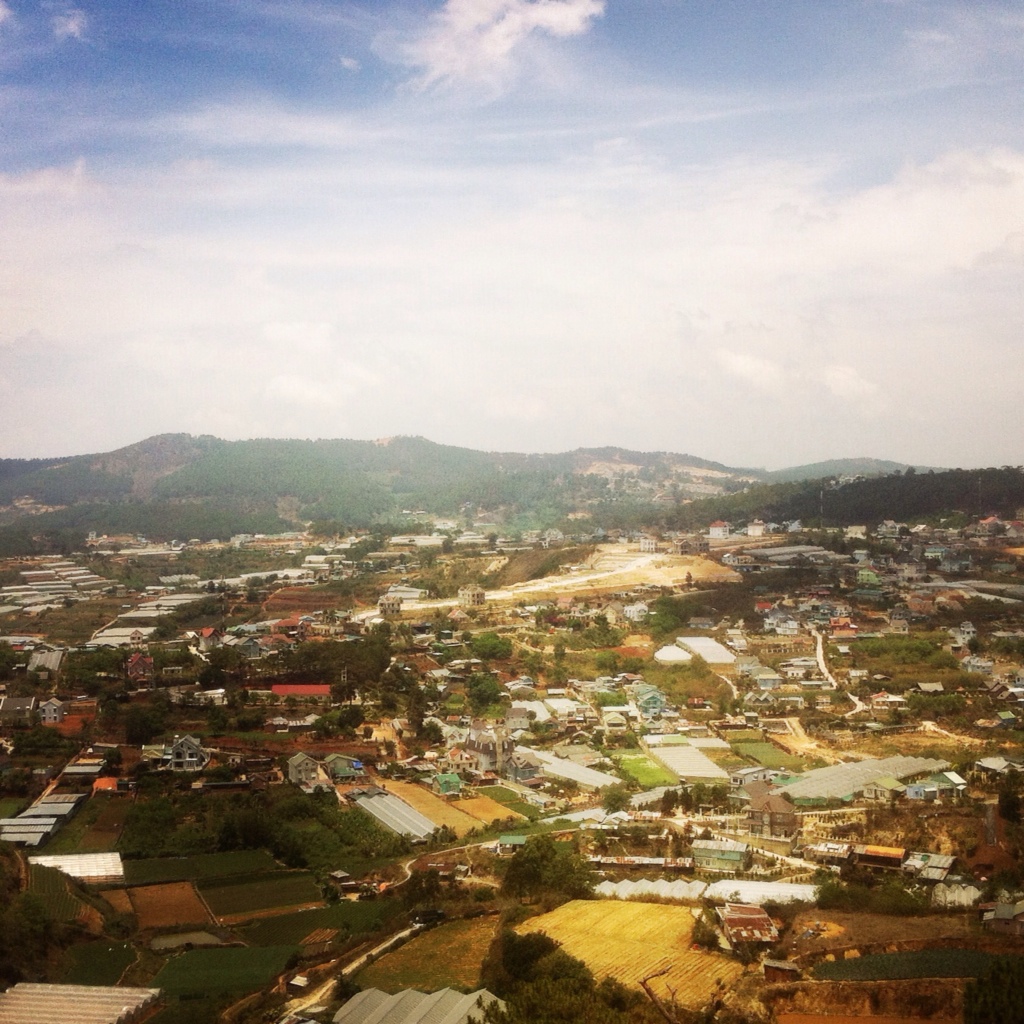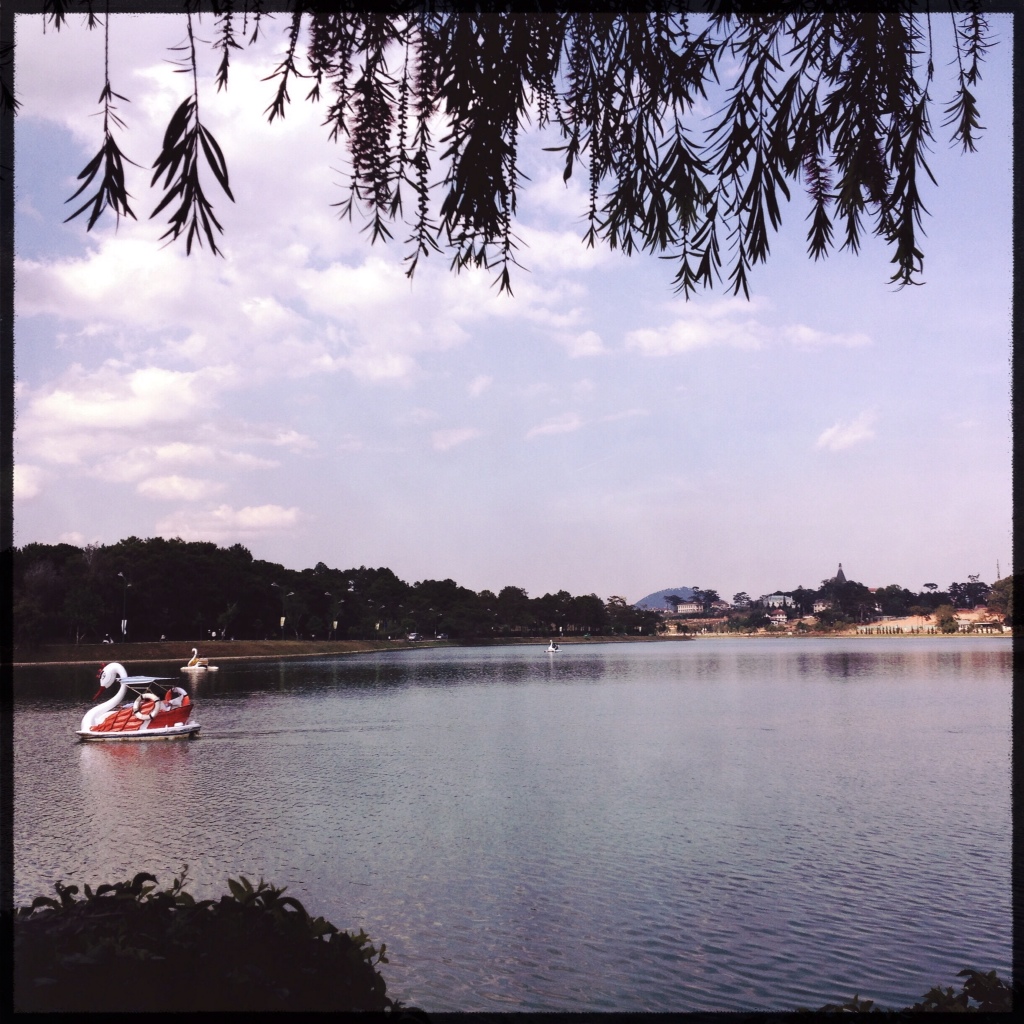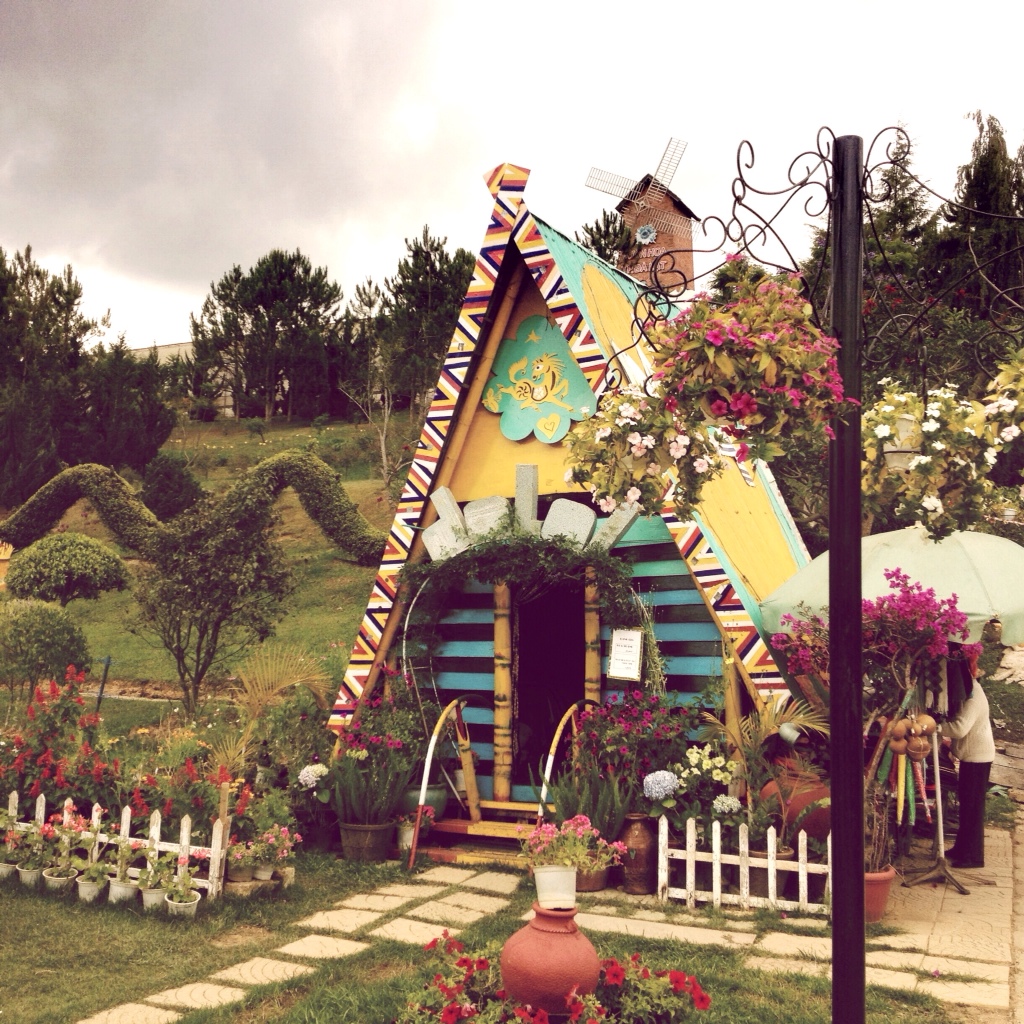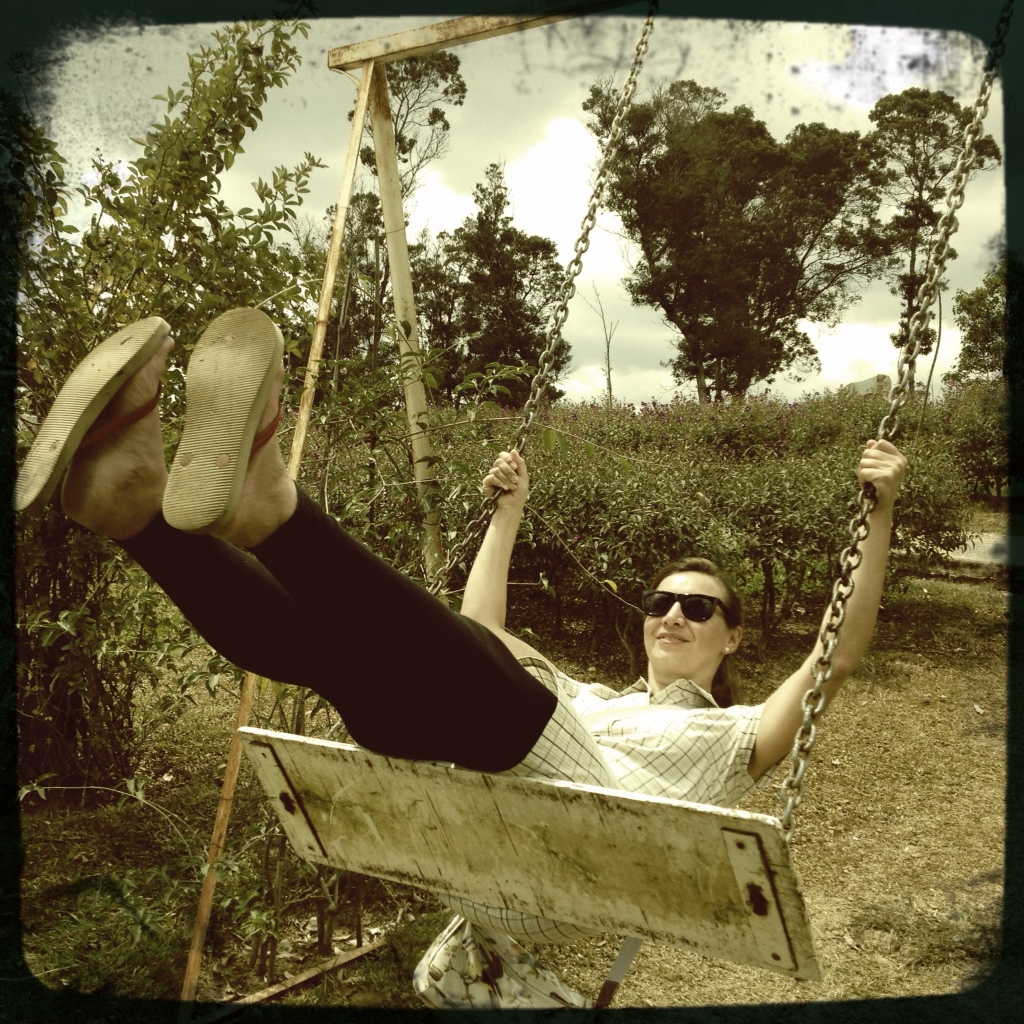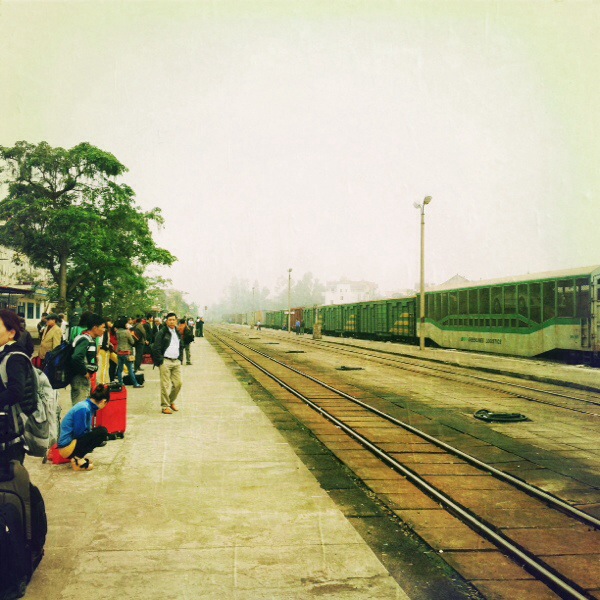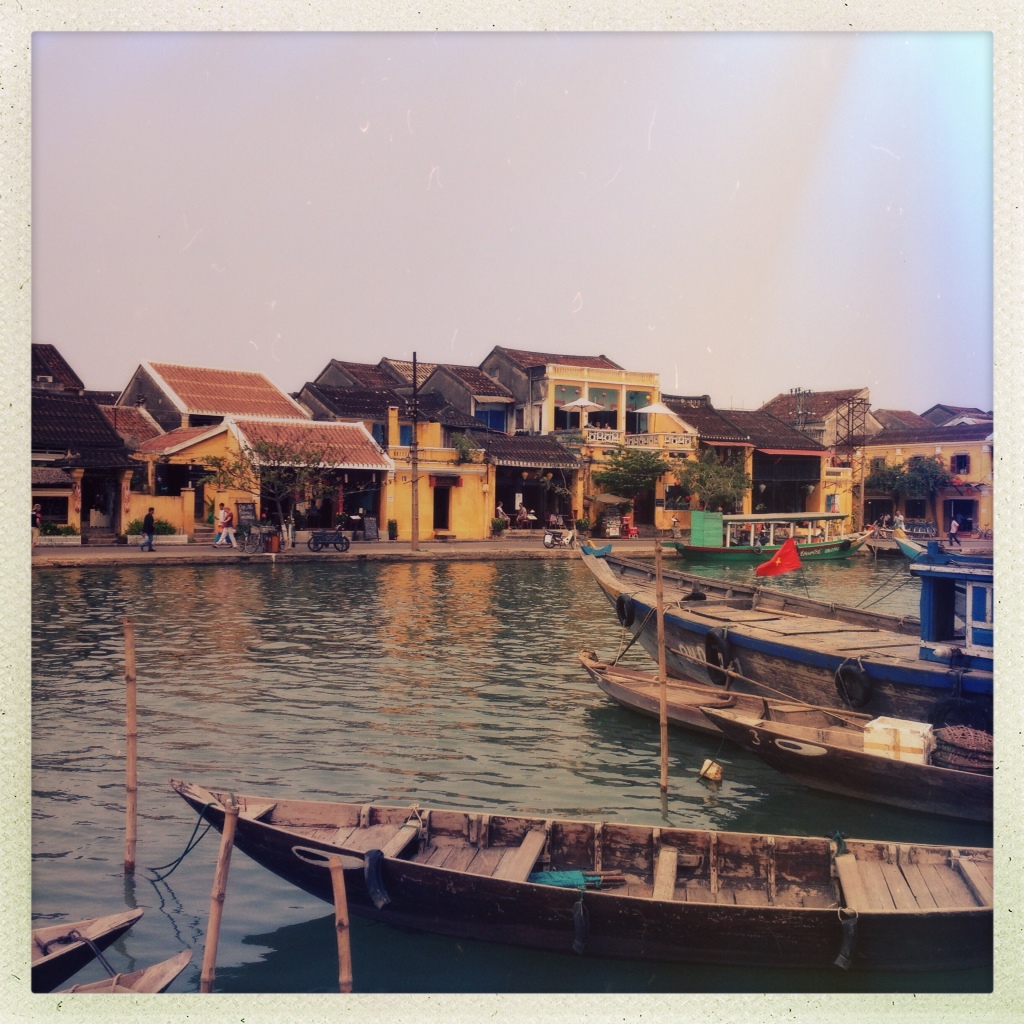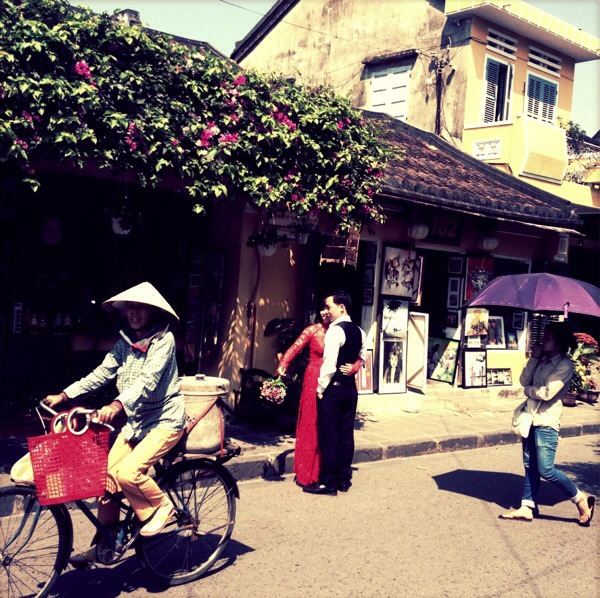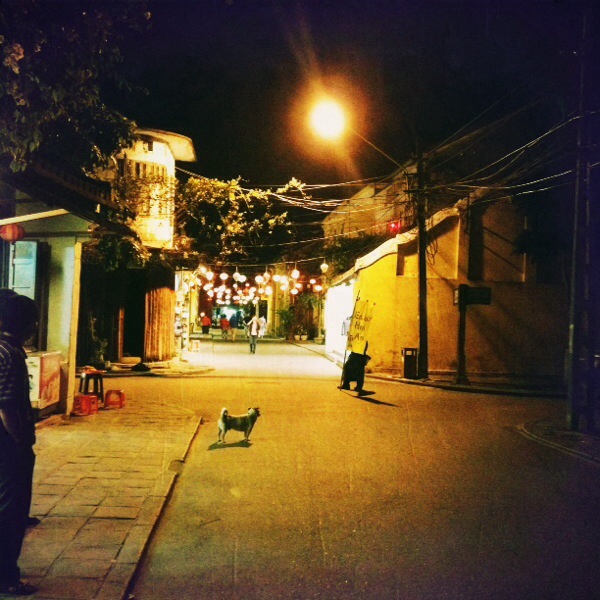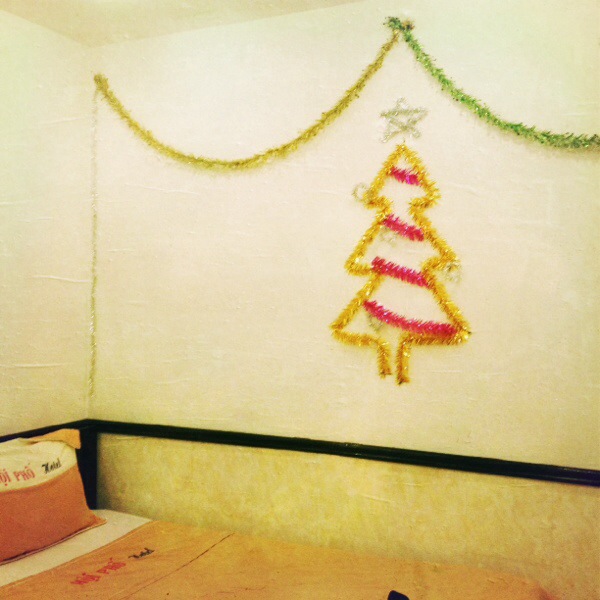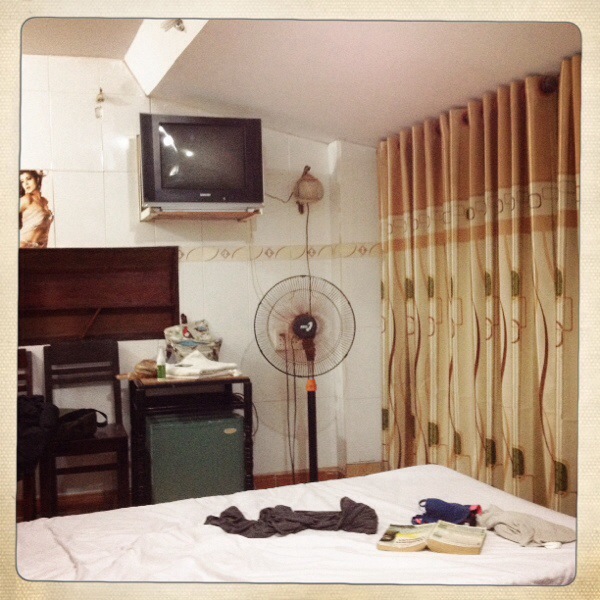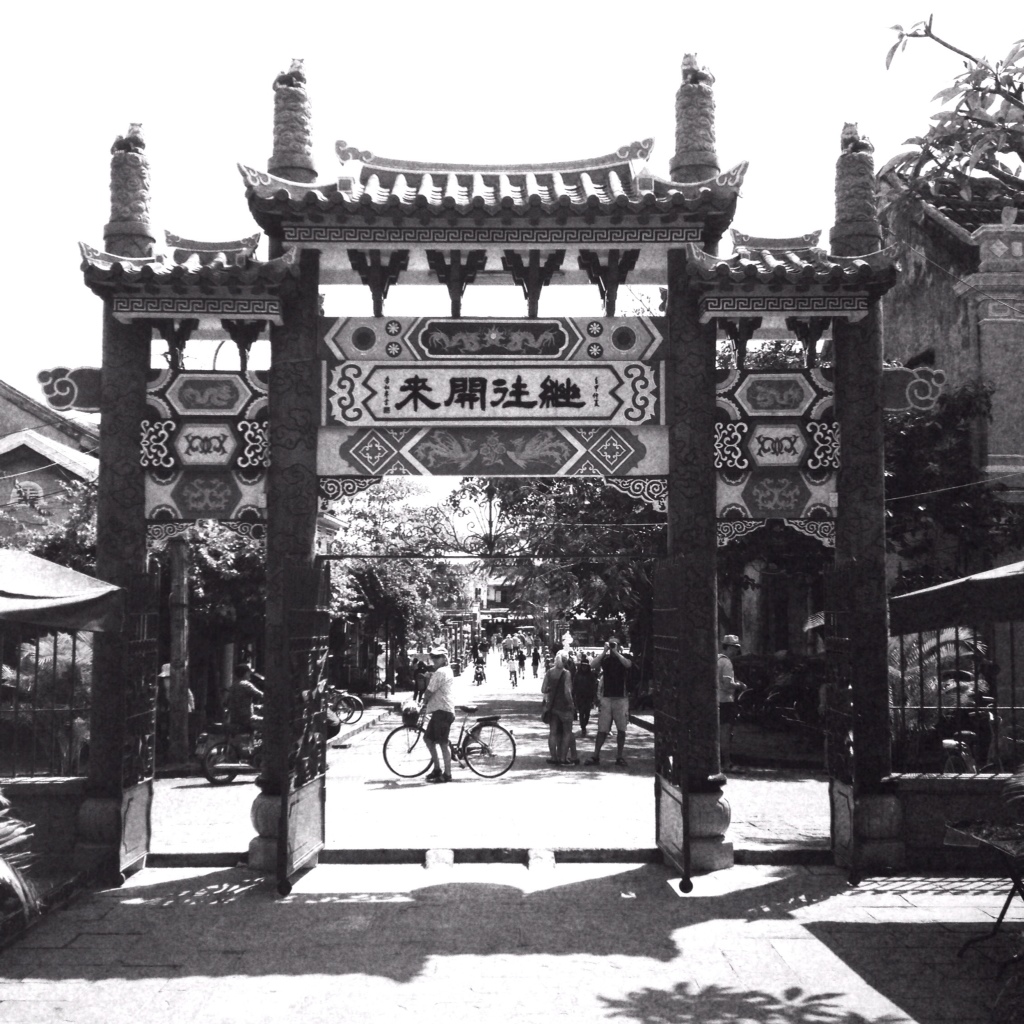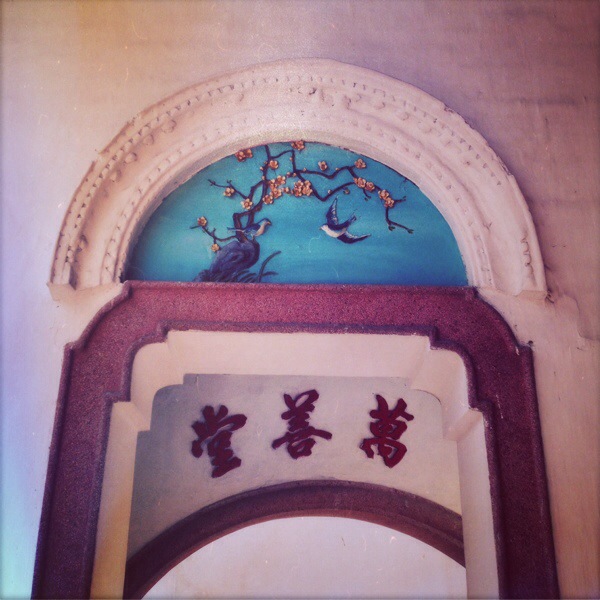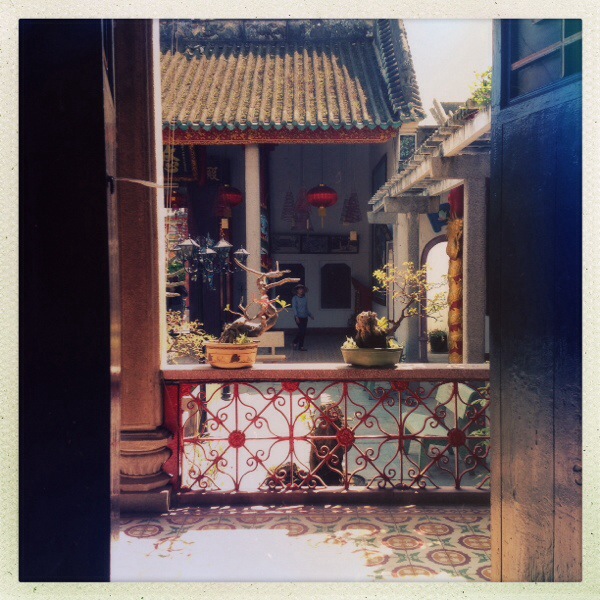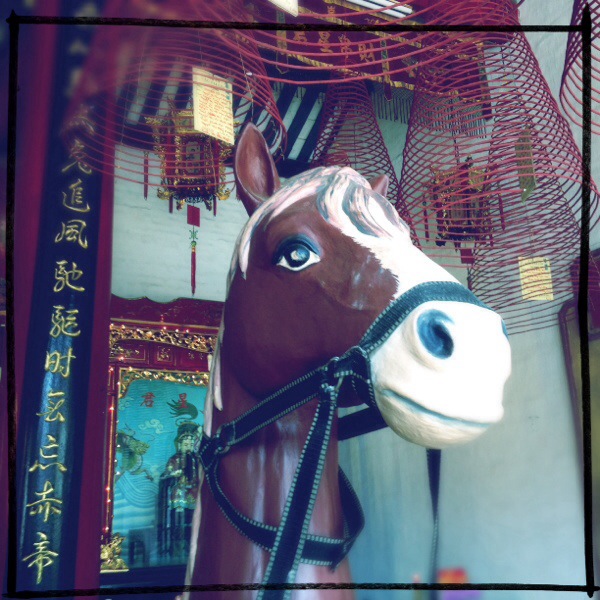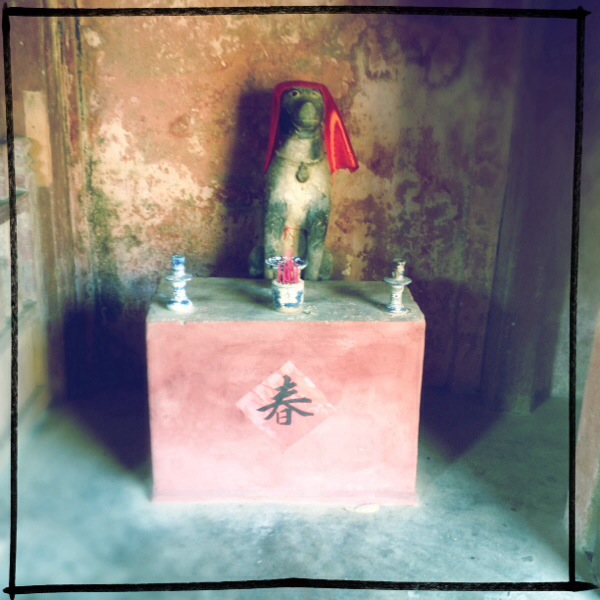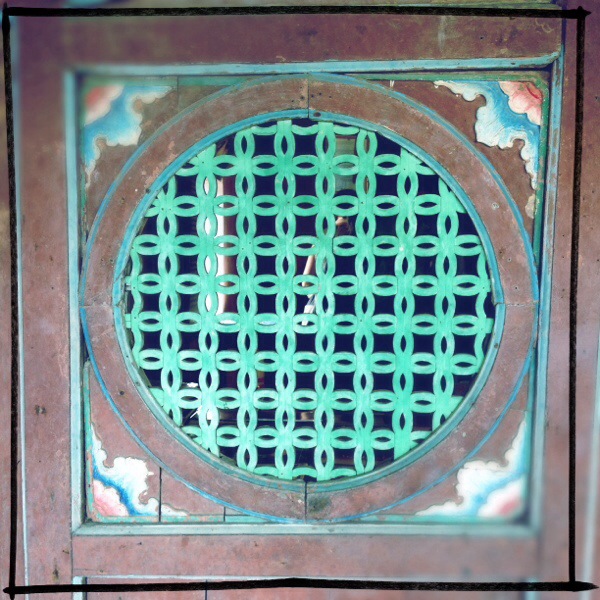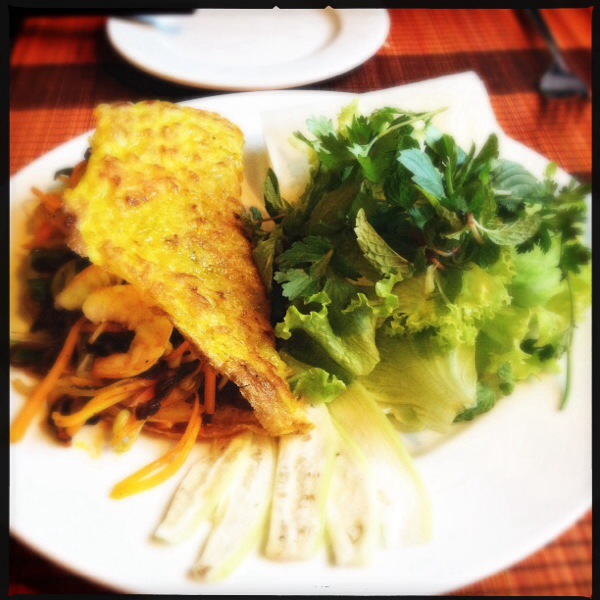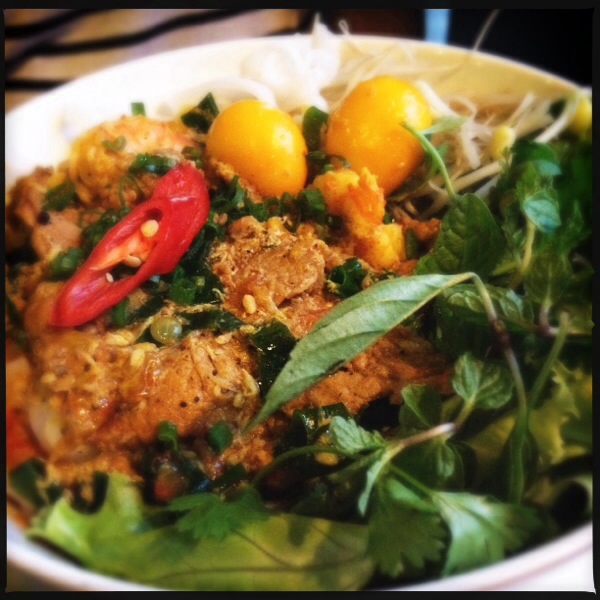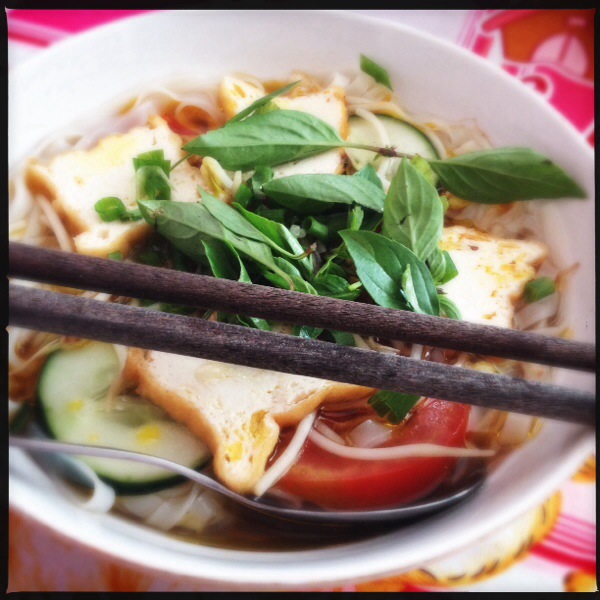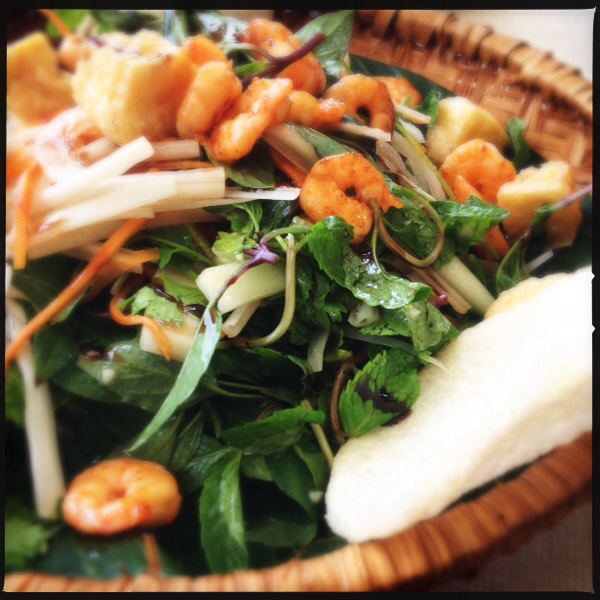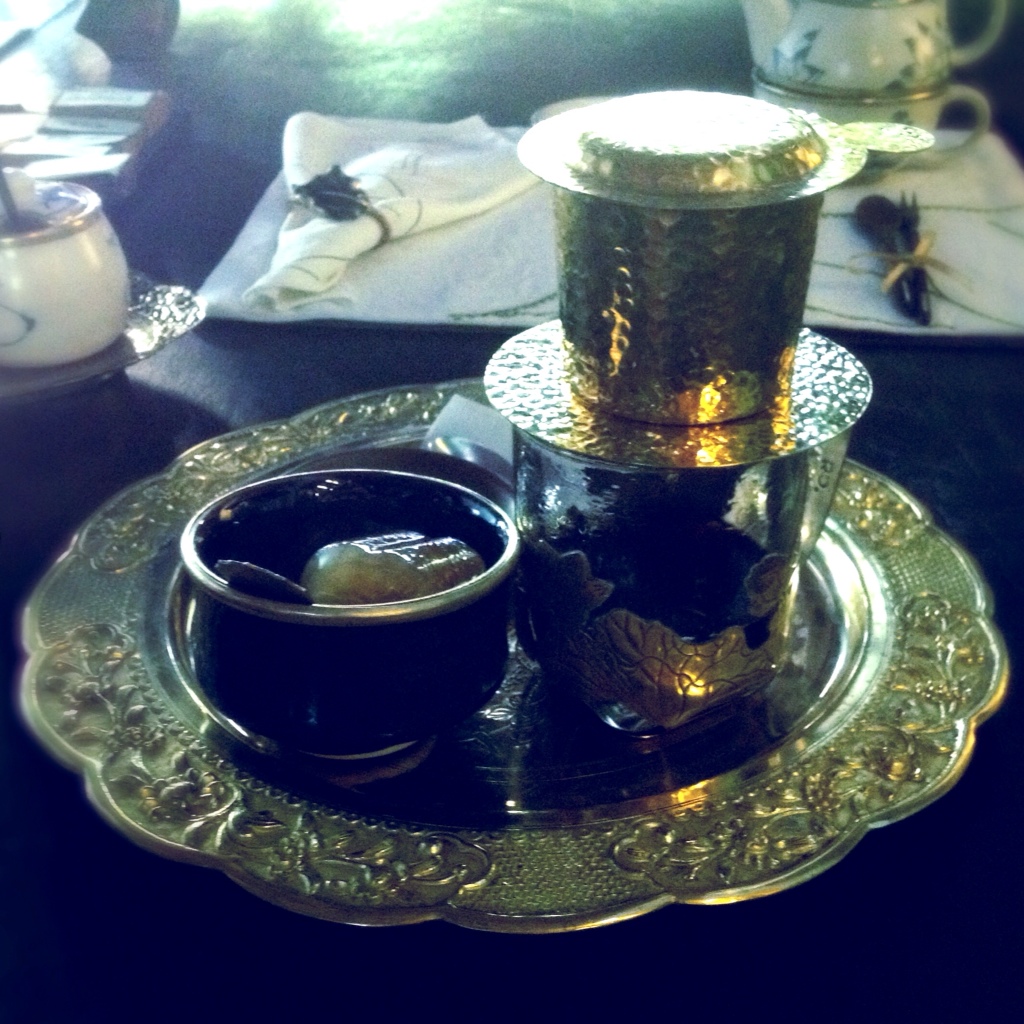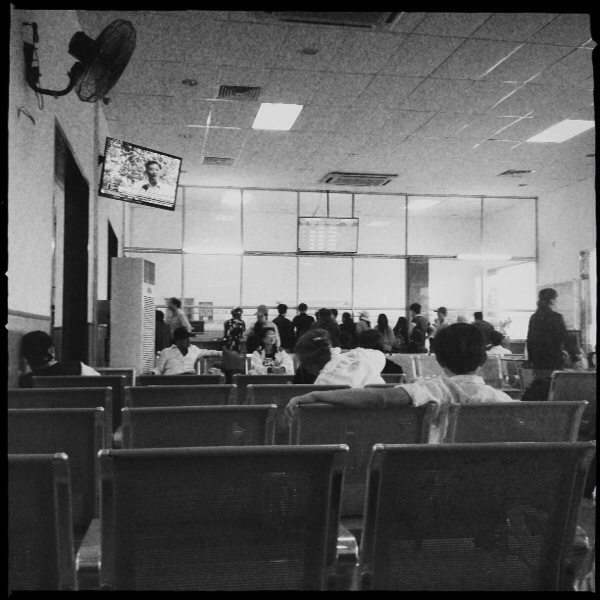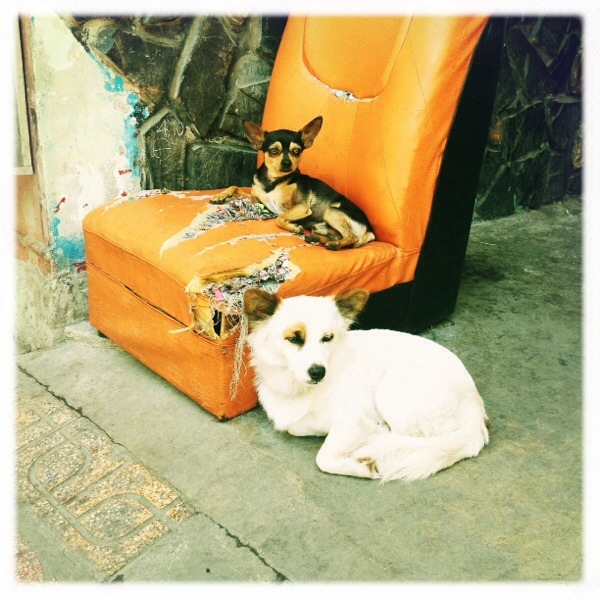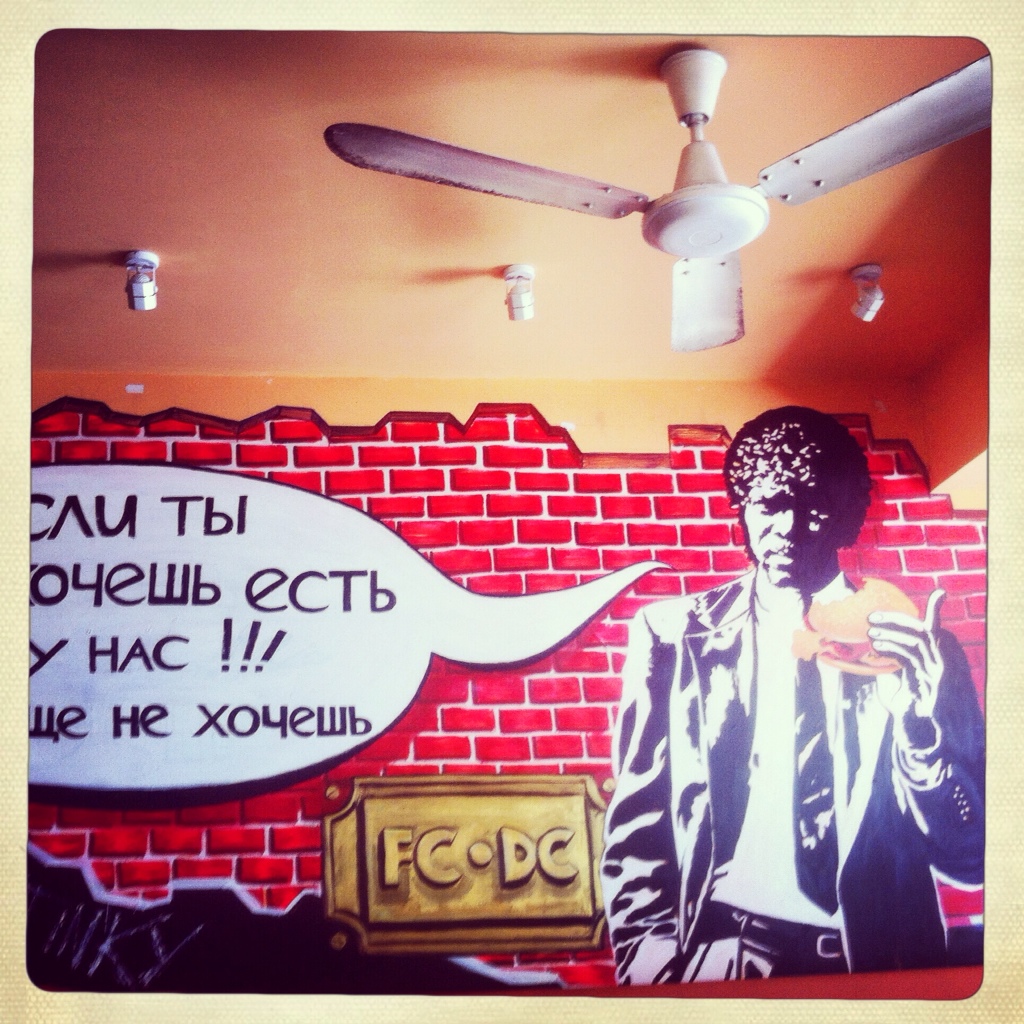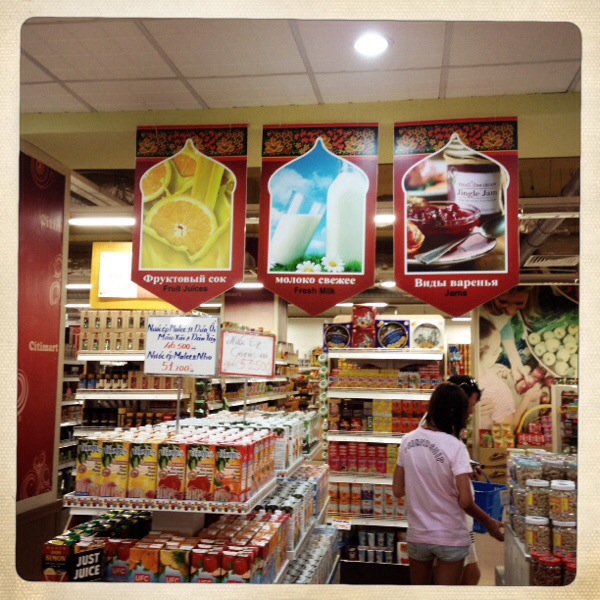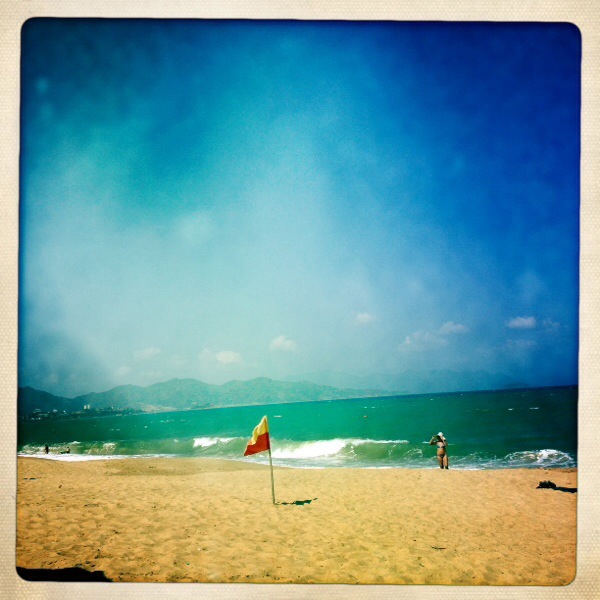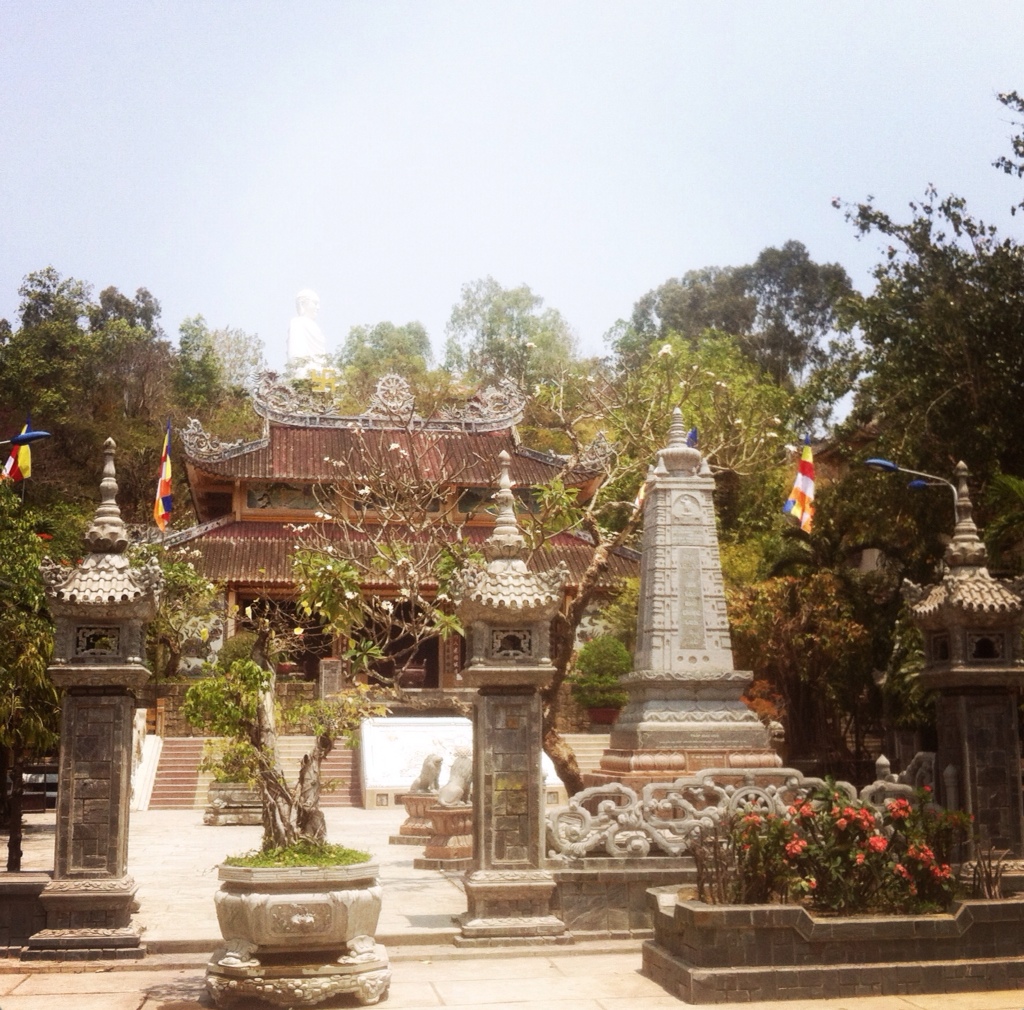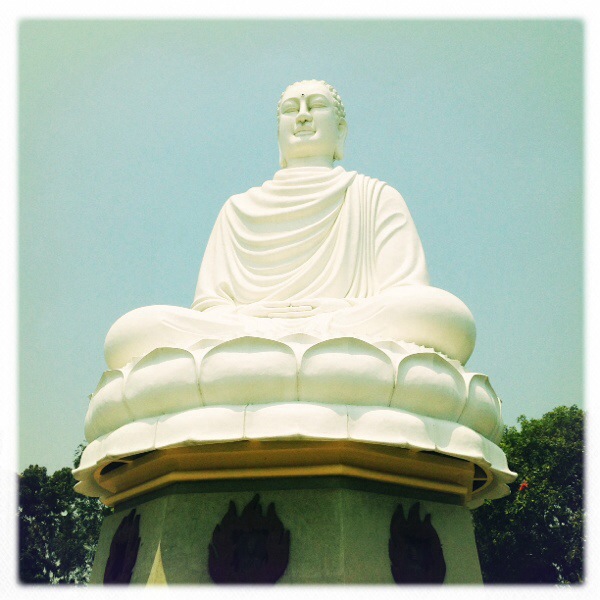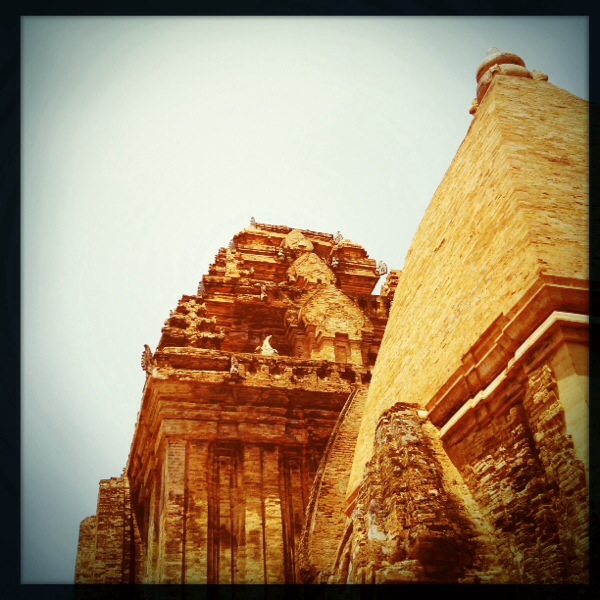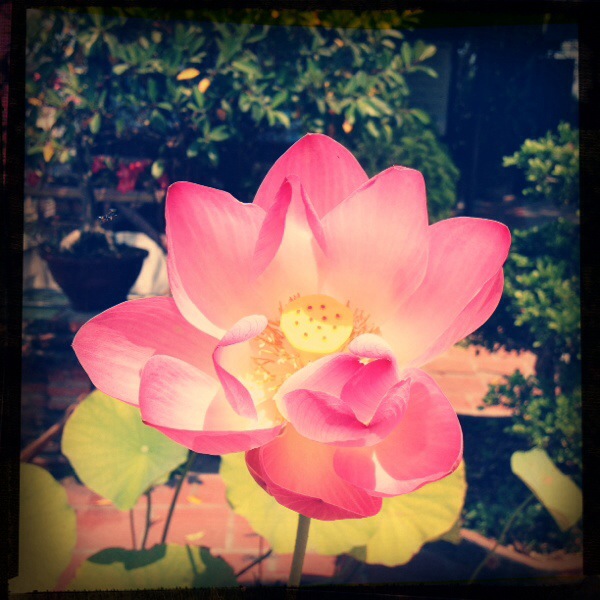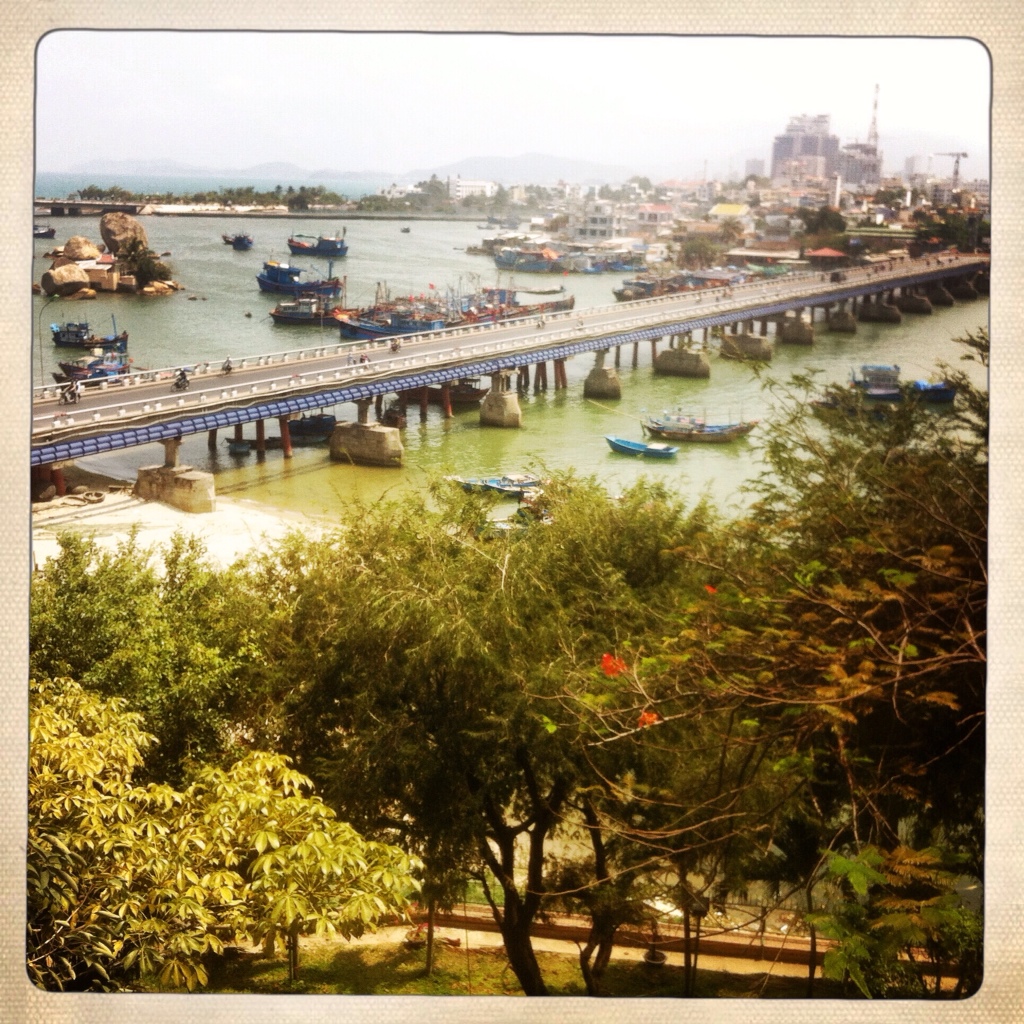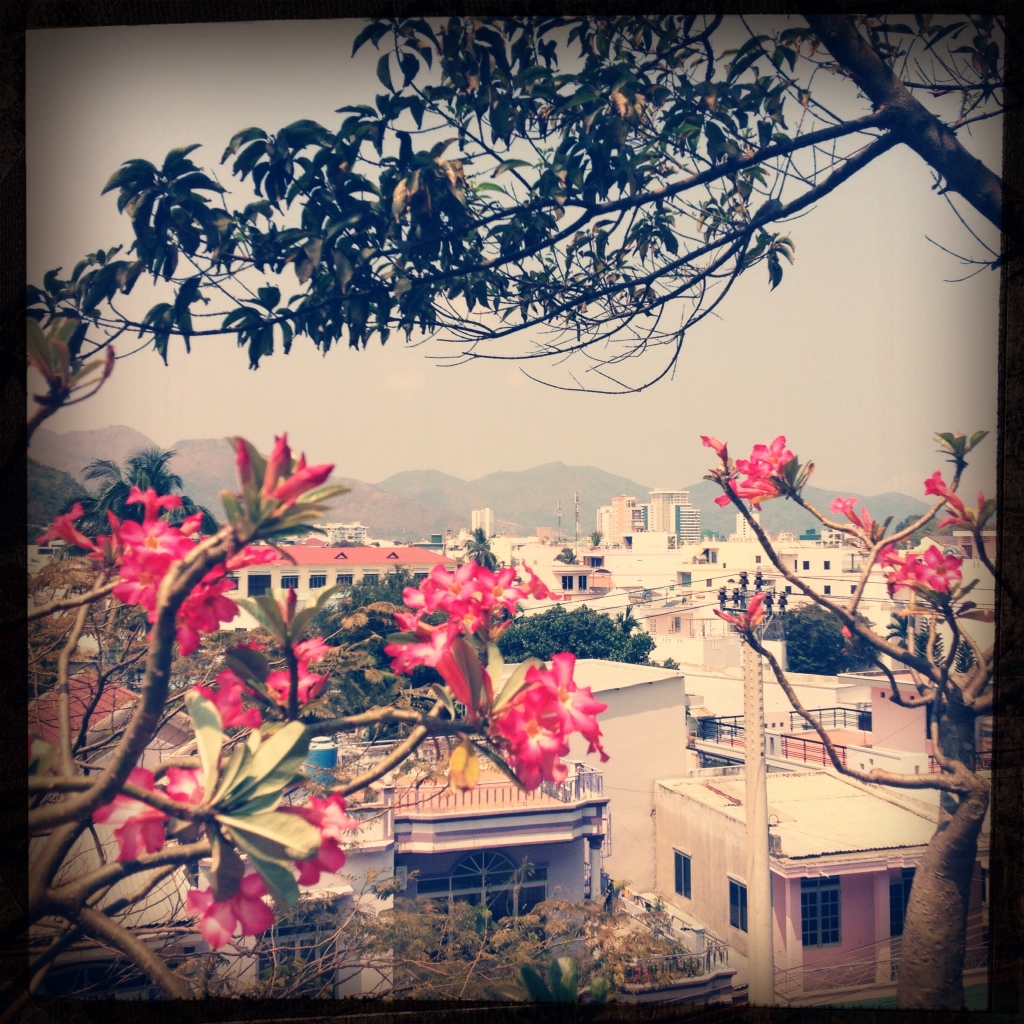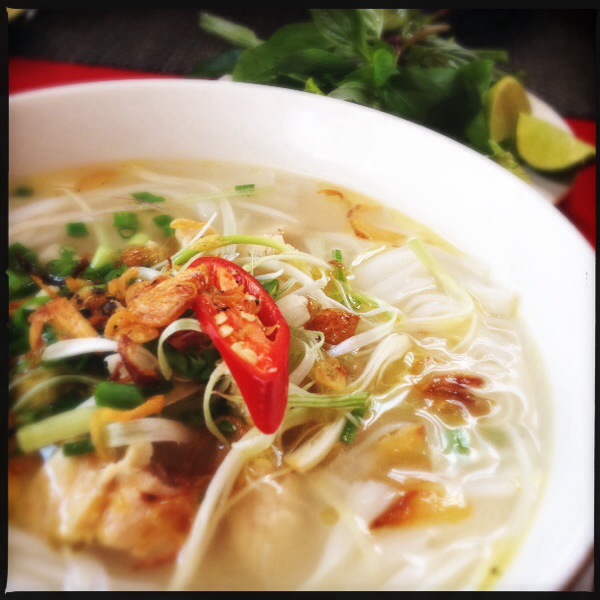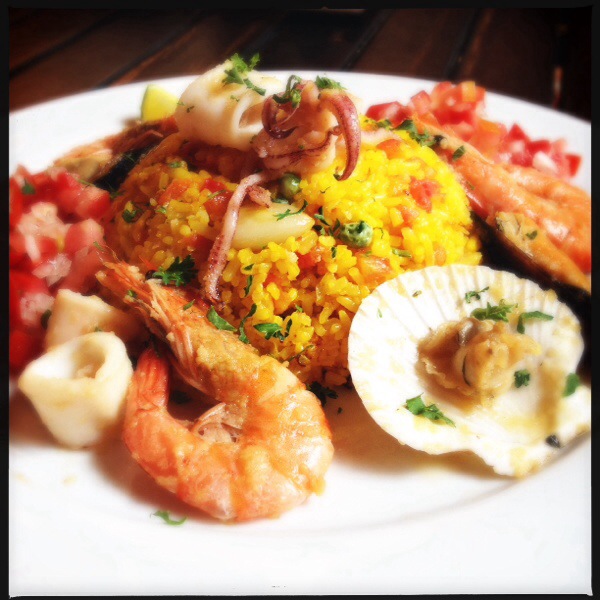From Nha Trang we moved onto Dà Lật – a former French colonial resort town that was spared bombing during the war. It's since become a holiday destination geared primarily at Vietnamese on vacation or honeymoon. Due to its temperate climate it's known locally as the 'city of eternal spring' and is the source of most of Vietnam's flowers, wine and produce.
Our arrival coincided with the start of the rainy season- the bus pulled in late in the afternoon after a four hour ride through heavy fog and drizzle atop the surrounding mountains. We spent the ride passing by motorbike drivers in wind-blown ponchos who, with legs tucked up out of view and the visors on their helmets dropped, looked like something out of Star Wars as they glided along the mountainside.
“Normal room, normal price”
We settled into a local guesthouse situated at the bottom of a hill called Chu's House for $10 a night- we liked it so much we remained there the entirety of our stay. The staff were friendly, cleaned the room each day, and poured double sized glasses of wine at night for 25,000₫ (~$1.25) each.
The only downside was that they, like most places in Vietnam, had one soundtrack they would put on repeat for foreigners. A lot of our time was spent drinking wine while listening to covers of Simon and Garfunkel's “The Sound of Silence”, The Carpenters' “Sha La La La” or, for some reason, The Cascades' “The Rythm of The Rain” – a song neither of us had ever heard before coming to Vietnam but which followed us from Hoi An to Ho Chi Minh.
At times we wondered if a salesman had come through each town and sold every business the same “Soundtrack for Tâys” to be popped on ten minutes after noticing tâys in your establishment. After a couple failed attempts at explaining that we were okay with Vietnamese music, we gave in to “Fields of Gold” or whatever mellow cheese was enqueued and tried to appreciate the intent behind the beaming smiles and knowing nods that seem to say “Hey- we know tâys, check out this sweet compilation we got just for the occasion.”
Chu's House was also close to a vegan resturant called Hoa Sen- due to the Buddhist influence, the Vietnamese eat vegan meals on certain days of the lunar cycle and Đà Lật was full of vegan resturants.
A feast's worth of food at Hoa Sen for ~200,000₫ (~$10) – eggplant fritters with tamarind sauce, lotus rice, pyramid dumplings (already eaten), fermented bean curd with braised veges and soy pieces with lemongrass and chili
A clean and herby breakfast of Hủ Tiếu Nam Vang noodle soup at Hoa Sen for 30,000₫ (~$1.50)
First eggs over easy we had seen in Southeast Asia
Aside from Hoa Sen, we became regulars at Góc Hà Thành which had the best western breakfast we've found in Southeast Asia. It's on the main backpacker strip and owned by a husband and wife who work the kitchen, wait the tables, juggle their young kids and chat with customers. The street has a strong community vibe as the husband often hangs out smoking cigarettes with the shopkeepers next door. Kids from up and down the street play on the sidewalk or loiter around different shops for amusement.
One of the best parts about the backpacker area of Đà Lật was its sparseness. There wasn't much to it except for a road that meandered up a hill. The traffic was by far slower than we were accustomed to elsewhere in Vietnam although no less dangerous- over breakfast one morning we watched a light rain lead to three guys laying their bikes down around a sharp corner and one lady driving head on into the side of a parked van.
Impatience leads to burned fingers
Apart from resturants, there were some good cafés and Vietnamese coffee to be had at about 15,000₫ (~75 cents) a cup. We liked Góc Hà Thành, Muse, and Bicycle Up Cafe best but the local chain Windmills was a good alternative for a more western style latte or an Irish coffee.
Bowls of shellfish for steaming or grilling
Like everywhere in Vietnam, Đà Lật had copious amounts of street food vendors. We happened upon the Lễ Hội Văn Hóa Miền Đông Đà Lật (Festival of Eastern Cultures) where they had closed off the center of town at night and set up market stalls and food stands along the streets with a few stages for entertainment.
Rice paper grilled over coals with quail egg, tiny shrimp, sesame seeds, green onions, and chopped chillies.
Aside from the Bánh Tráng above, we didn't try much of the street food as most contained meat and we were excited to be back in an area where it was practical to be a vegetarian. If you are in Đà Lật and looking to try what the street side can offer, we found vietnamcoracle.com had the best run down of the area.
You can put your Soilent Green fears aside
The Bành Tráng lady we visited was set up in an alleyway across from a bakery named Liên Hoa that had a wide range of baked goods, we returned a couple times for the coconut cakes at 5,000₫ (~25 cents) each.
During the day time the central market is open and sells fruit, produce, and flowers in the bottom while tailors and clothing vendors populate the upper portion.
Elsewhere in town we visited Đinh 3 (a.k.a. Palace 3)- the third residency of the former King Bảo Đại who was ousted during the Vietnam War. The decor had a sleek World War II era vibe but the form of the structure itself reminded me of the YMCA that I took karate classes in as a kid.
Seeing this kind of architecture out here was surreal as most traces of the French occupation are no longer that obvious. I recalled a scene from The Quiet American where Fowler, the aging British journalist, bets Pyle, the naïve young American, that in five hundred years there may be no New York or London but there will still be rice paddy fields, produce being carried to market on long poles, pointed hats, and boys riding water buffaloes. It indeed felt like the tide of day to day Vietnamese life left only a few uneroded oddities remaining.
From the Palace we were able to walk to Nhật Liên, an upscale vegetarian restaurant, and on to another attraction known as “Crazy House”. It was nice to have things close enough together that we could cover distances on foot instead of hailing cabs although we seemed to be the only tourists walking to destinations this far out of the city center.
One of the half finished towers at Crazy House
Still crazy after all these years
Russian girl vogueing atop Crazy House
Crazy House turned out to be an elaborate structure of concrete and rebar painted to look like a big tree house out of a 70's cartoon. It's still under construction after twenty some odd years of opening even though the proprietor is now elderly and rarely makes appearences. Like a lot of things in Đà Lật, it was set for maximum kitsch factor but ultimately felt like a narcissistic display of wealth as it failed to hold any religious or administrative purpose in the community.
Further out of town we visited Linh Phước Pagoda – it contains a massive Quan Âm (akin to The Virgin Mary), a multileveled tower of increasingly celestial Buddhas and a main pagoda that contains a shrine area dedicated to its founder.
Interior of the tower
The elaborate designs on the buildings are constructed from fragments of broken pottery. At the base of the main tower is a large bell on which people stick pieces of paper with handwritten wishes before sending a hanging wooden ram into the side. The operation was overseen by an old nun who, during our descent from the tower, motioned that she wanted to lock us in during her lunch break. We were under the impression that monks aren't supposed to have physical contact with the opposite sex, but she had no problem poking and prodding me in the gut for a few laughs.
Pigsy
Katie liked the statues of characters from the TV show Monkey Magic that had been hidden away in the parking lot behind the main pagoda.
In contrast, we later visited Thiền Viện Trúc Lâm which was a much more somber complex housing a sect of Zen monks.
Bodhidharma with his iconic beard, bug eyes and shoe on a stick
We found this temple interesting for its Bodhidharma-centric imagery and well groomed grounds. If Linh Phước was visually akin to a Catholic cathedral then Trúc Lâm was more a Puritian chapel with its plain and simple style. Likewise, the monks appeared much more serious as they stood and stared silently within temples, tapping the side of a small metal bowl to release a reverb upon each person's entry.
The ride out to the temple can be done via taxi or cool gondola ride that carries you over the pine forests and provides a view of the surrounding greenhouses.
View from the gondola
Back in town, we took a walk one day around Lake Hố Xuân Hương and out to Đà Lật Flower Park.
The park is full of flower beds and dotted with gazebos, swing sets, benches, and statues of characters from western fairy tales and Vietnamese folk stories. Up on a hill to one side of the park are rows of greenhouses selling shrubs, flowers and small trees- adjacent are hedges trimmed into animals around pieces of modern art.
In the end, we were in Đà Lật for sixteen days total but only saw a subset of everything there is to do in the area. We never took up one of the numerous Easy Rider guys who constantly called to us, but in a way that was the best part – for the first time in Vietnam they were the only guys around shouting at us. And they were actually cool guys who offered a real service – for a small fee they'll ride you all through the mountains, over to outlying villages, lakes, vistas – whatever you want on the back of a chopper.
Dollar for dollar Đà Lật was the best place we've been and we'd recommend it to anyone looking for a cheap place to retreat for awhile.
How cheap is cheap? To make things more concrete, I tracked some daily costs as follows:
Typical Tourist Day
Breakfast: 80,000₫ @ Bicycle Cafe – Two Viet style coffees with condensed milk (cà phê sữa nóng), one weird juice drink we thought was a breakfast item, and a tomato and cheese omelette with a baguette
Taxi to Tourist Attraction #1 “Crazy House”: 40,000₫ with tip
Entrance Fee to “Crazy House”: 80,000₫ (40,000₫ each)
Lunch: 153,000₫ @ Nhật Liên – Braised Malaysian style spicy tofu, sautéed spinach with mushrooms, spring rolls, free tea, a bottle of water, and steamed white rice
Entrance Fee at Tourist Attraction #2 “Palace 3”: 30,000₫ (15,000₫ each)
Taxi to Lake Hố Xuân Hương: 35,000₫ with tip
Drinks: 70,000₫ @ Nhà Hàng Thủy Tạ – Two glasses of local wine by the side of the lake
Afternoon Coffee: 64,000₫ @ Windmills Cafe – Two Western style lattes
Dinner: 220,000₫ with tip @ Bingo Pizza – One large vegetarian pizza with jalapeños added, two cokes and a soda water
Bottled Water: 10,000₫ @ convenience store – 1.5 liters of local mineral water for back at the room
Accommodation: 210,000₫ @ Chu's House – Basic room with double bed, private bathroom with hot water, and a window with low street noise
Total: 992,000₫ = ~$47 USD (~$50 AUD)
That comes out to about $23.50 USD (~$25 AUD) per person for a pretty packed day of checking out tourist attractions and eating a couple big meals.
But that's not everyday, since we often like to alternate between chilling out and venturing out, so if you were to take away the cab fares and entrance fees the new total would be 807,000₫ or ~$38 USD (~$40.75 AUD) which equates to roughly $19 USD (~$20 AUD) per person.
If you really wanted to take it one further and cut out luxuries like the coffee and alcohol it would drop down to 643,000₫ or ~$30 USD (~$32.50 AUD) which equates to roughly $15 USD (~$16 AUD) per person.
This is in keeping with another day I recorded:
Simple Long Term Traveller Day:
Brunch: 138,000₫ with tip @ Góc Hà Thành – Two Viet style coffees with condensed milk (cà phê sữa nóng), two omelets with French toast and fruit
Afternoon Coffee: 64,000₫ @ Windmills – Two western style lattes
Dinner: 201,000₫ @ Hoa Sen – Two pyramid cakes, a plate of fried eggplant, lotus fried rice, fermented soybeans with braised vegetables and lemon grass chill fried gluten pieces with a plate of fresh herbs
Bottled Water: 10,000₫ @ convenience store – 1.5 liters of local mineral water for back at the room
Accommodation: 210,000₫ @ Chu's House – Basic room with double bed, private bathroom with hot water, and a window with low street noise
Total: 623,000₫ = ~$29.50 USD (~$31.50 AUD)
If you then wanted to go even further, you could eat twice a day while regulating yourself to street food and local eateries (putting your meals in the 40,000-60,000₫ range), skip the tourist attractions, haggle your way into a room for 170,000₫ a night and live on roughly 300,000₫ per day; divide that by two and you're looking at about $7 or $8 per person.
Keep in mind that this is for two people sharing accommodation costs- it might run you a few bucks more a day if you're on your own depending on if you want a separate room or are just going for dorm beds at hostels.
There were days where we'd wake up late, get a bowl of pho for lunch, eat at the markets for dinner, maybe get a coffee in between and wouldn't spend much more than $20 all day with nothing to do but read, take a walk through some temples, snap a few photos, do a little bit of life planning or listen to a podcast while playing cards. Not exactly nonstop travel adventure- but for two people in their early 30's, it's nice to have a break and regroup before jumping back into workaday life.
